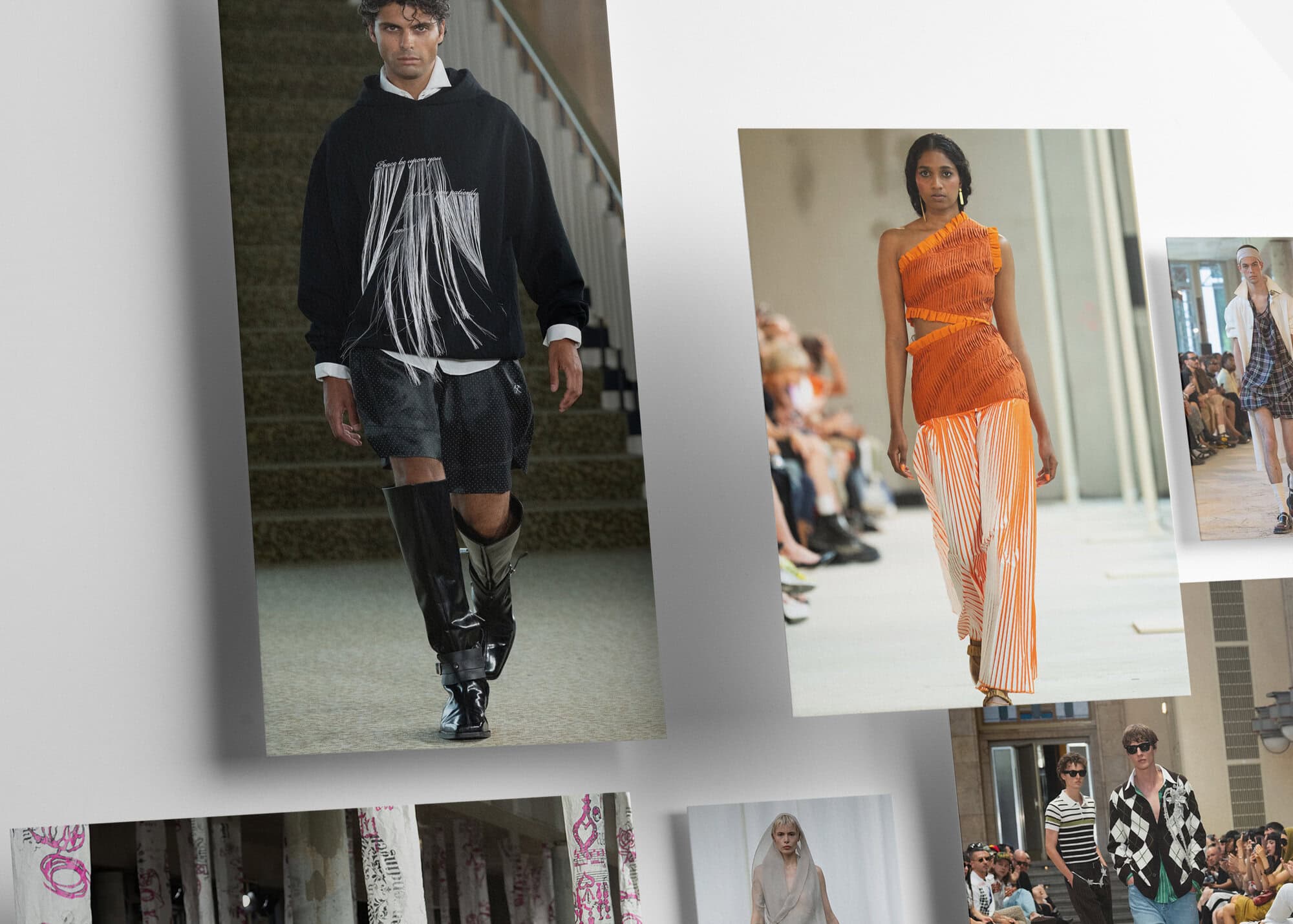Berlin Fashion Week is Not the New London.
It’s Berlin, B*tch!
By Dao Tran
With all the buzz about Berlin Fashion Week being the new London, it’s no comparison because it’s apples and oranges, it’s its own animal. Berlin is a hotbed of cultural progressiveness and creative expression. Known for its underground, raw authenticity and anti-establishment stance, people are drawn to its freedom and stay for its inclusivity. There are so many different worlds and lifestyles that thrive and are celebrated here.
Berlin Fashion Week is generously underwritten by the Berlin Senate Department for Economy, Energy and Enterprises, which has recognized that it is an important economic and cultural driver. It is gaining international relevance through the ambitious stewardship of the Fashion Council Germany under Christiane Arp, with her fashion instinct and sense for the cultural zeitgeist. Opening up the Berlin Contemporary competition to international applicants gives exciting African brands such as PALMWINE IceCREAM, Buzigahill, and Orange Culture a platform. The INTERVENTION format curated by Mumi Haiati of Reference Studios brings renowned brands such as GmbH and Ottolinger back to their hometown as well as David Koma and Mowalola, attracting more and more industry experts and influencers each season. The Berliner Salon showcases designers at the intersection of fashion and art in a museum context, allowing discovery of talent who would not necessarily present a conventional fashion show. Below are our absolute highlights from the season.
GmbH
GmbH opened with 58 seconds of silence, for every thousand people who have been killed in Gaza. Following is an excerpt of their powerful message:
“The cruelty of this world has severed our connection to it.
We no longer know how to act or feel.
[…]
But this collection is not about cruelty, death or destruction.
It’s a collection that reflects a process of working and living through a time defined by the
most abject forms of horror
and moral collapse,
and trying to come out on the other side
still human.“
In “Imitation of Life,” Serhat Işık and Benjamin Huseby continued with their cope from last season, turning inward towards the fundamentals, finding solace and grounding in family and community. They honor their cultural legacy and celebrate their traditions through integrating elements from their way of dress in the impeccably tailored collection. The euro print tops read as a reference to the wedding ritual of pinning money onto the couple as well as a commentary on late stage capitalism. And their gorgeous takes on suits and tuxedos are absolutely what you want to get married in. While populations are being decimated, social values are being overturned, and human rights revoked, the reality is that life goes on, life doesn’t stop for death. We all wonder how the atrocities of WWII could have happened, yet we find ourselves down the same slippery slope of complicity now. Işık and Huseby find grace and focus on solidarity in their approach, healing from inside out and cultivating beauty and connection in the midst of despair.

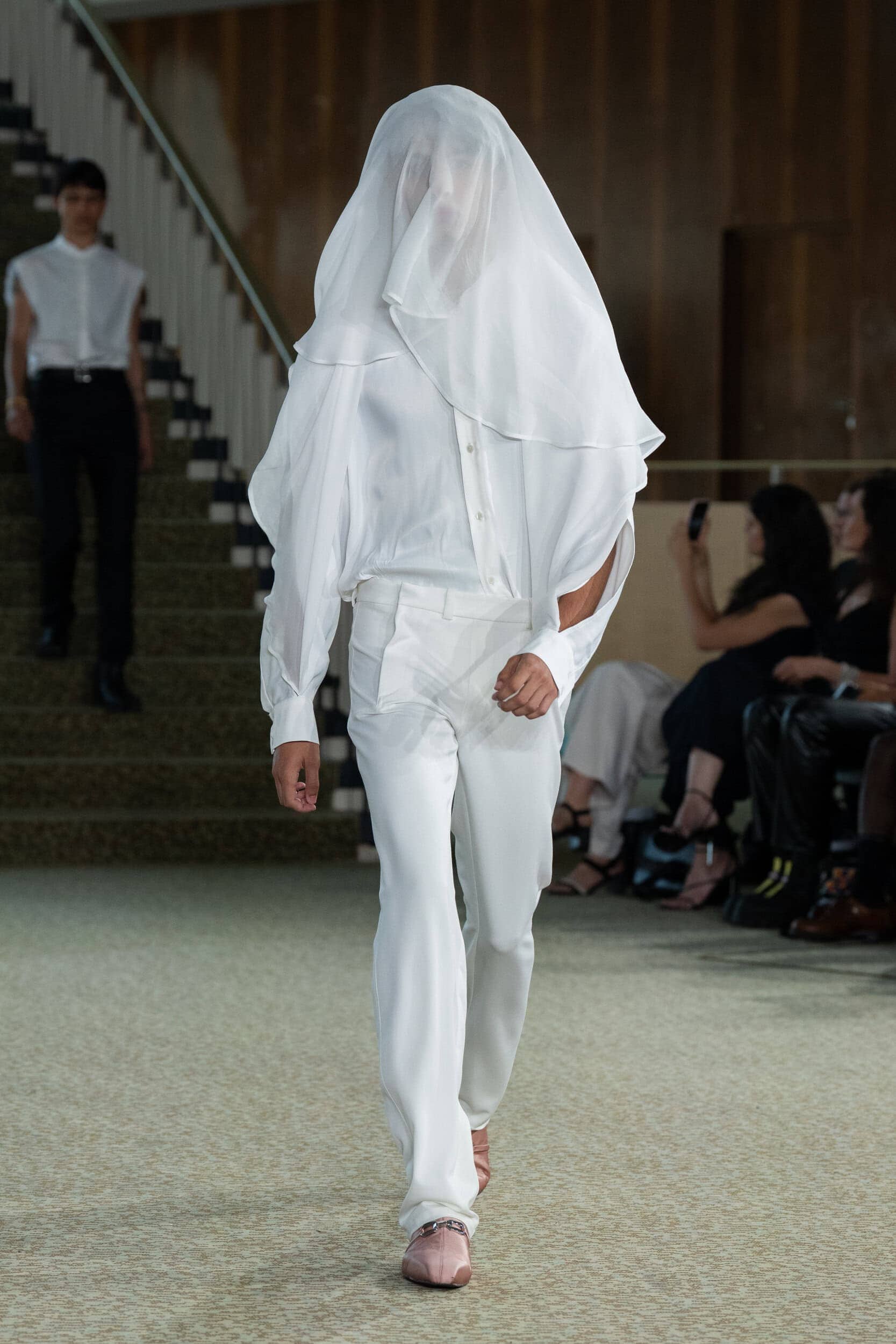
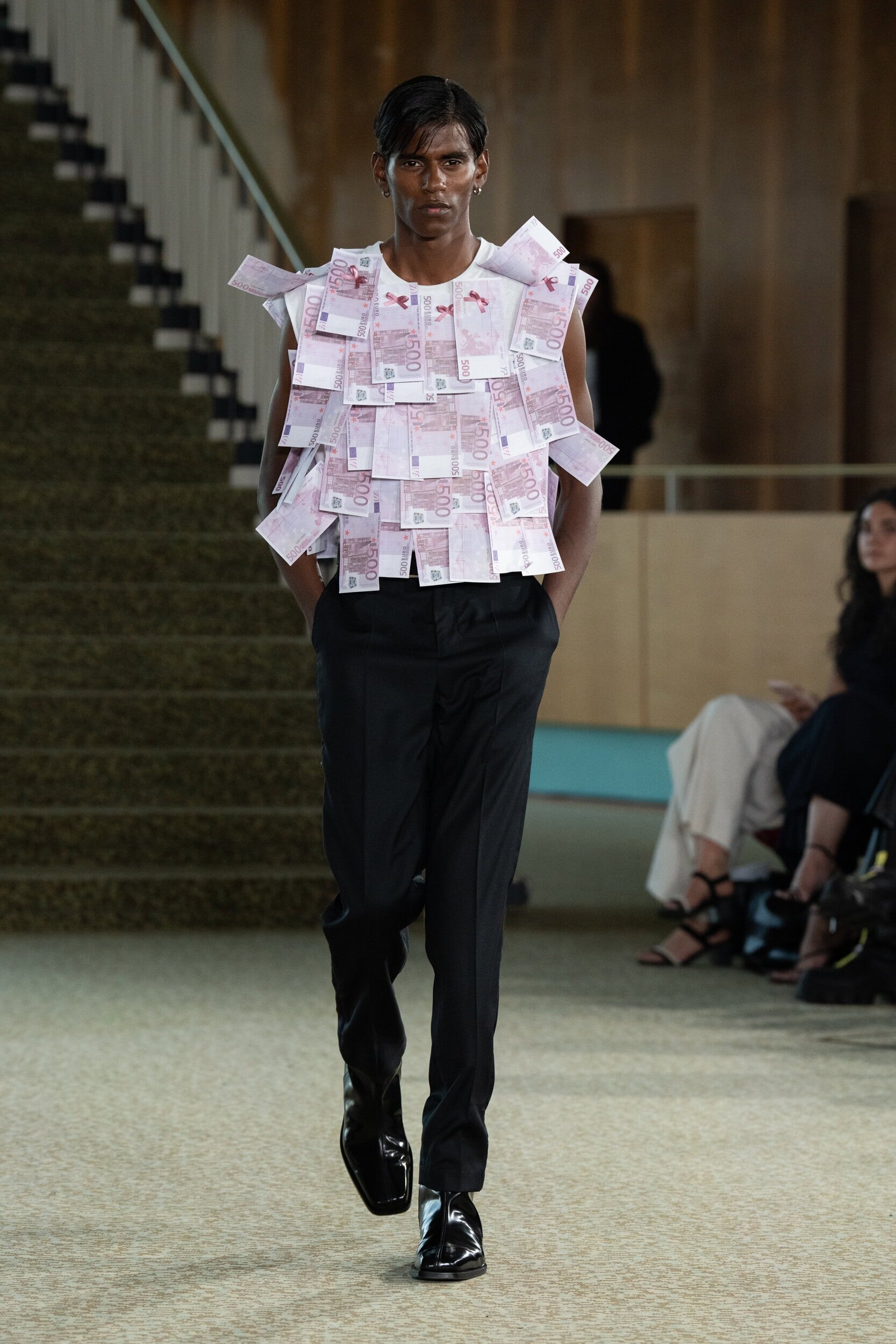
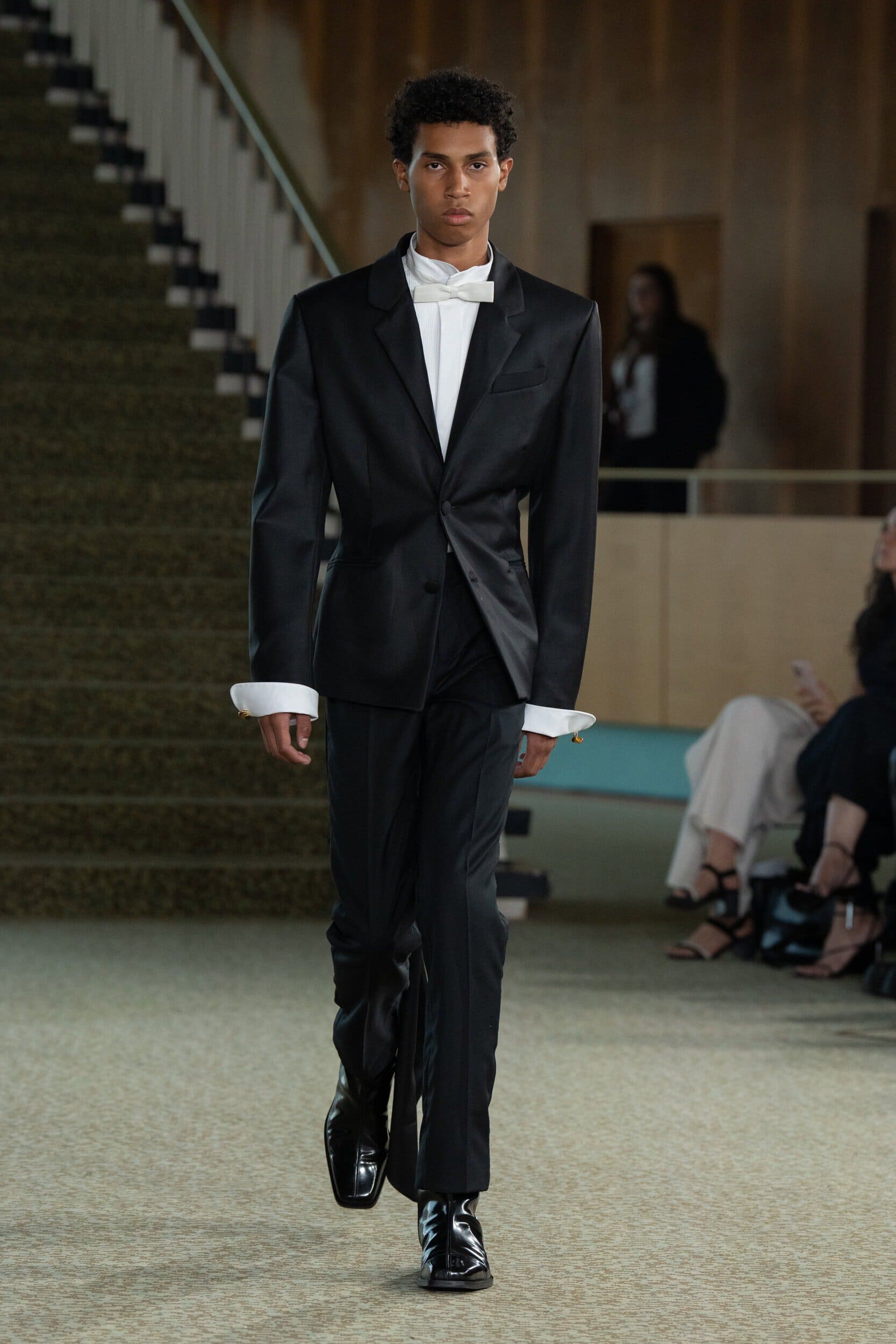
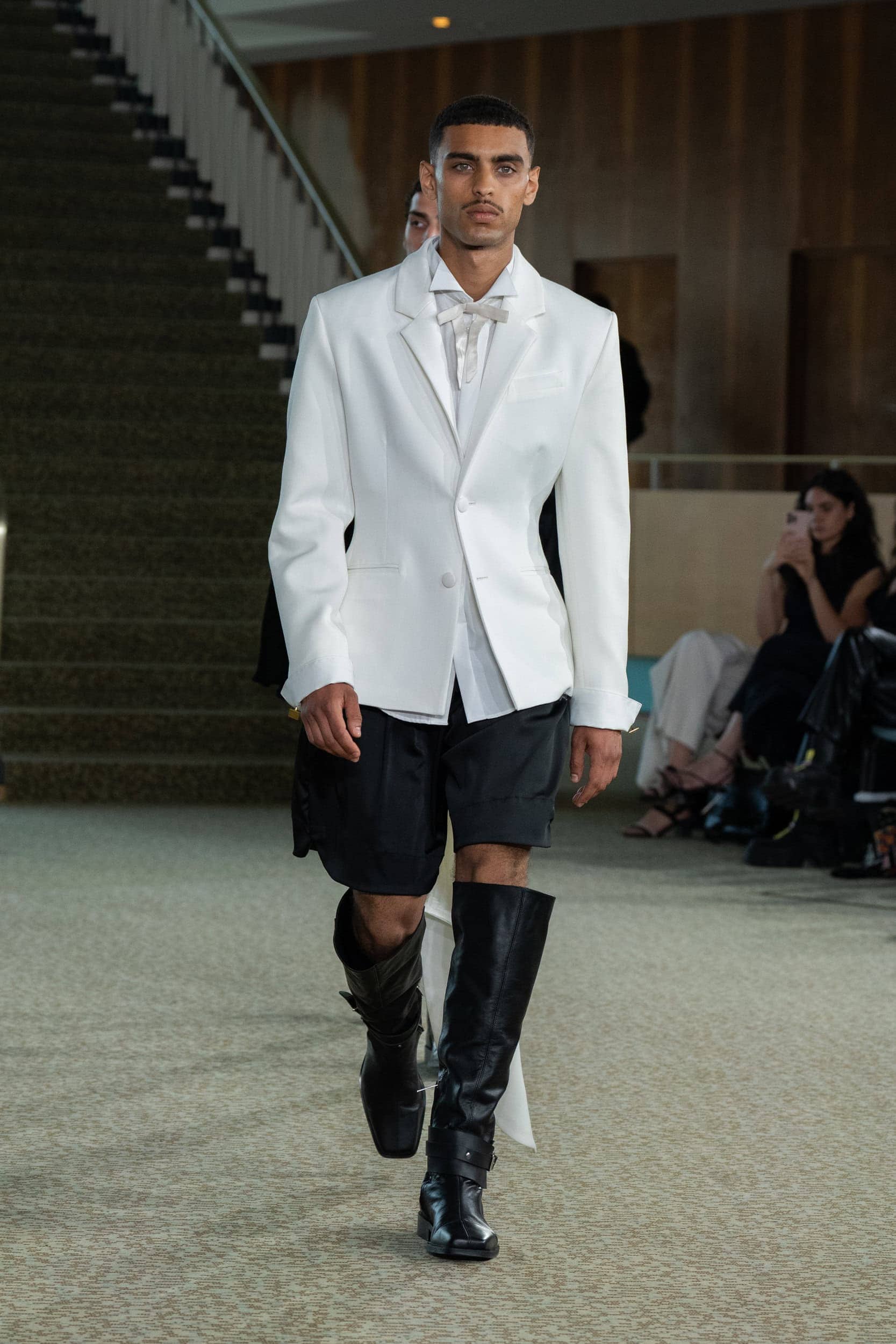
Buzigahill
Buzigahill also held a moment of silence, drawing attention to the 150,000 who have died in the civil war in Sudan, and laid a recitation of a passage from the UN Declaration of Human Rights ending with the statement: “All human beings are born free and equal in dignity and rights,” in 17 different languages on top of the soundtrack. Creative director Bobby Kolade was born in Sudan to Nigerian-German parents and grew up in Kampala, Uganda, and Lagos, Nigeria. He studied in Berlin and Kampala and worked at Maison Margiela and Balenciaga, then founded the label in Uganda in 2018 as a systemic critique of the global second-hand clothing market which dumps all our cast off clothes in Africa.
The label’s debut at Berlin Fashion Week was titled “Return to Sender 11,” the 11th collection in their Return to Sender project, which turns textile colonialism on its head by reclaiming agency, employing traditional craftsmanship to transform those garments that end up in Owino Market, the country’s largest second-hand market, into craveable fashion. The embroidery is done using ancestral techniques by the Milaya Project, a collective of women artisans in the Bidi Bidi refugee camp in South Sudan. The biodegradable bustiers are sculpted out of cassava starch and gelatin. The fringe chainlink pieces are hand-knotted from old T-shirts and patchwork handcrafted from discarded streetwear. And the show provided the most heartwarming moment of the week, when a mother in the front row erupted in pride and joy as her twin sons walked the runway.
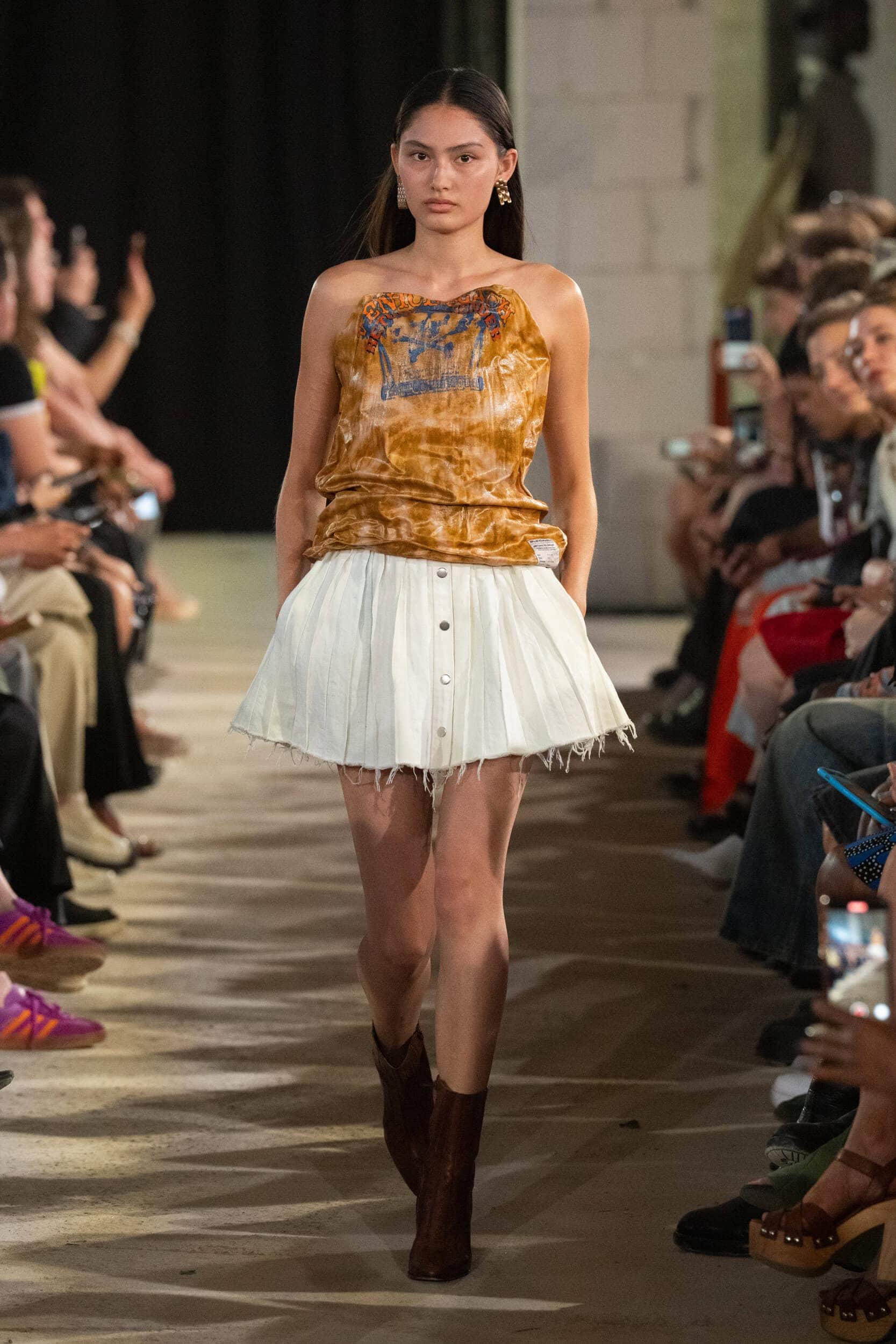
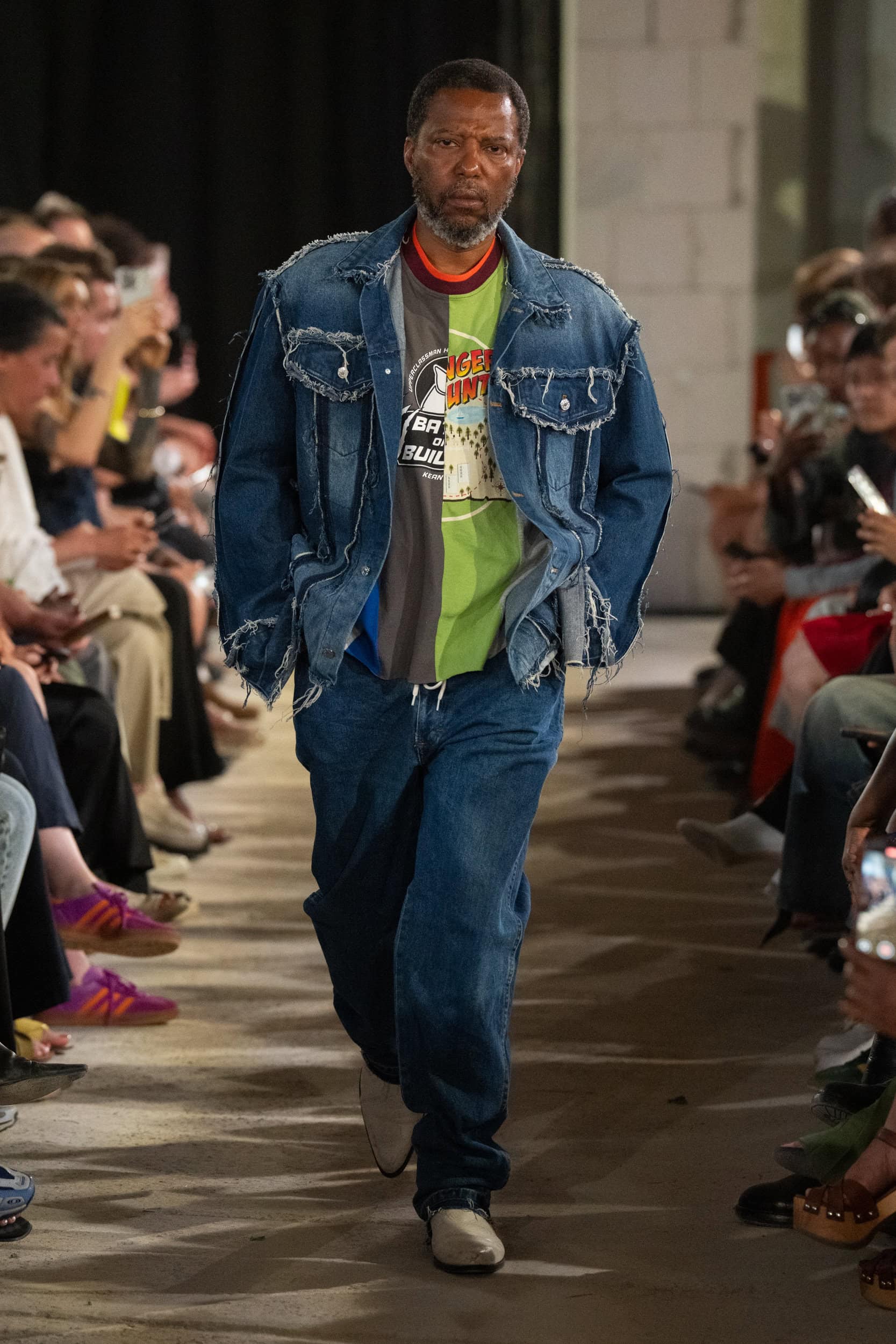
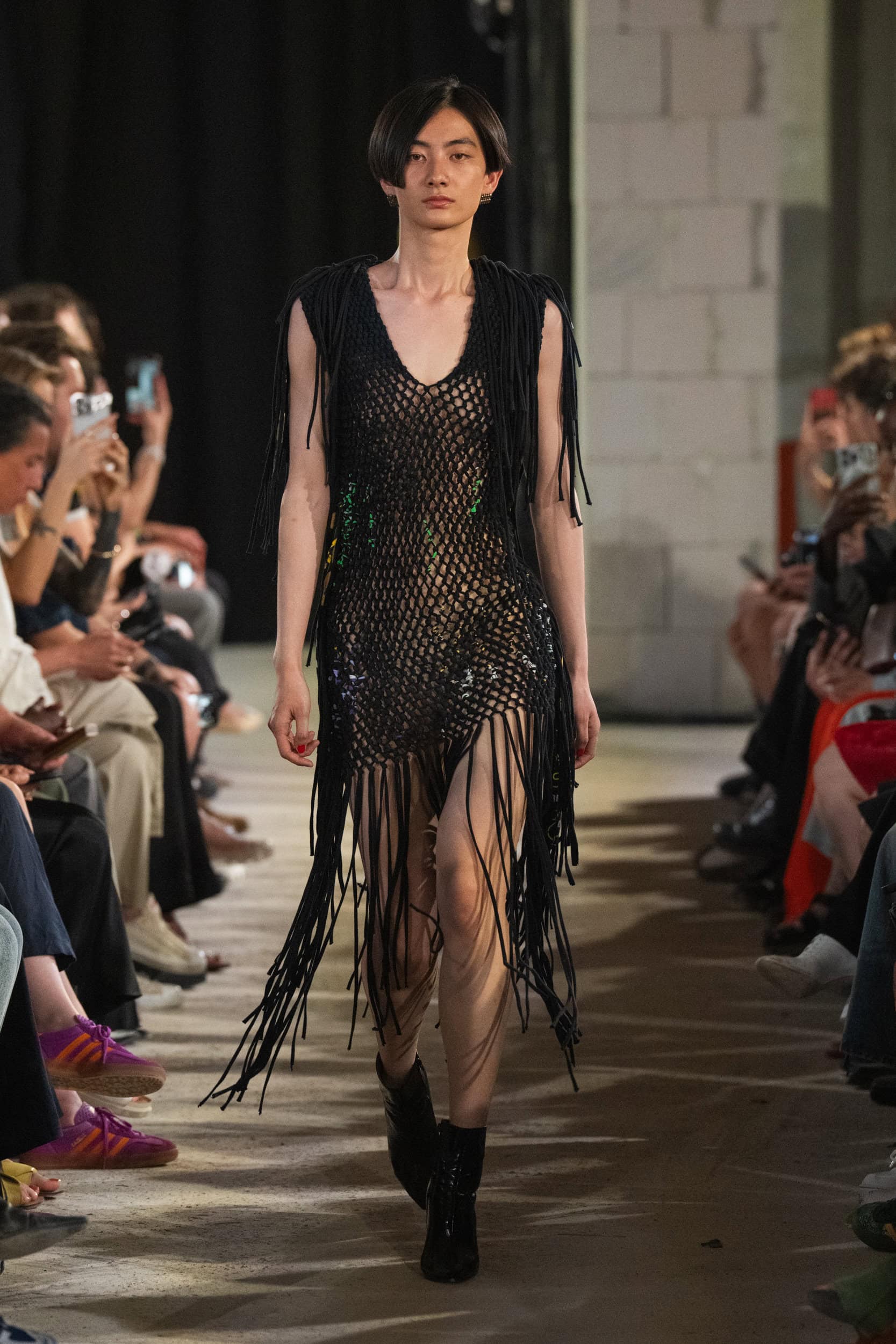
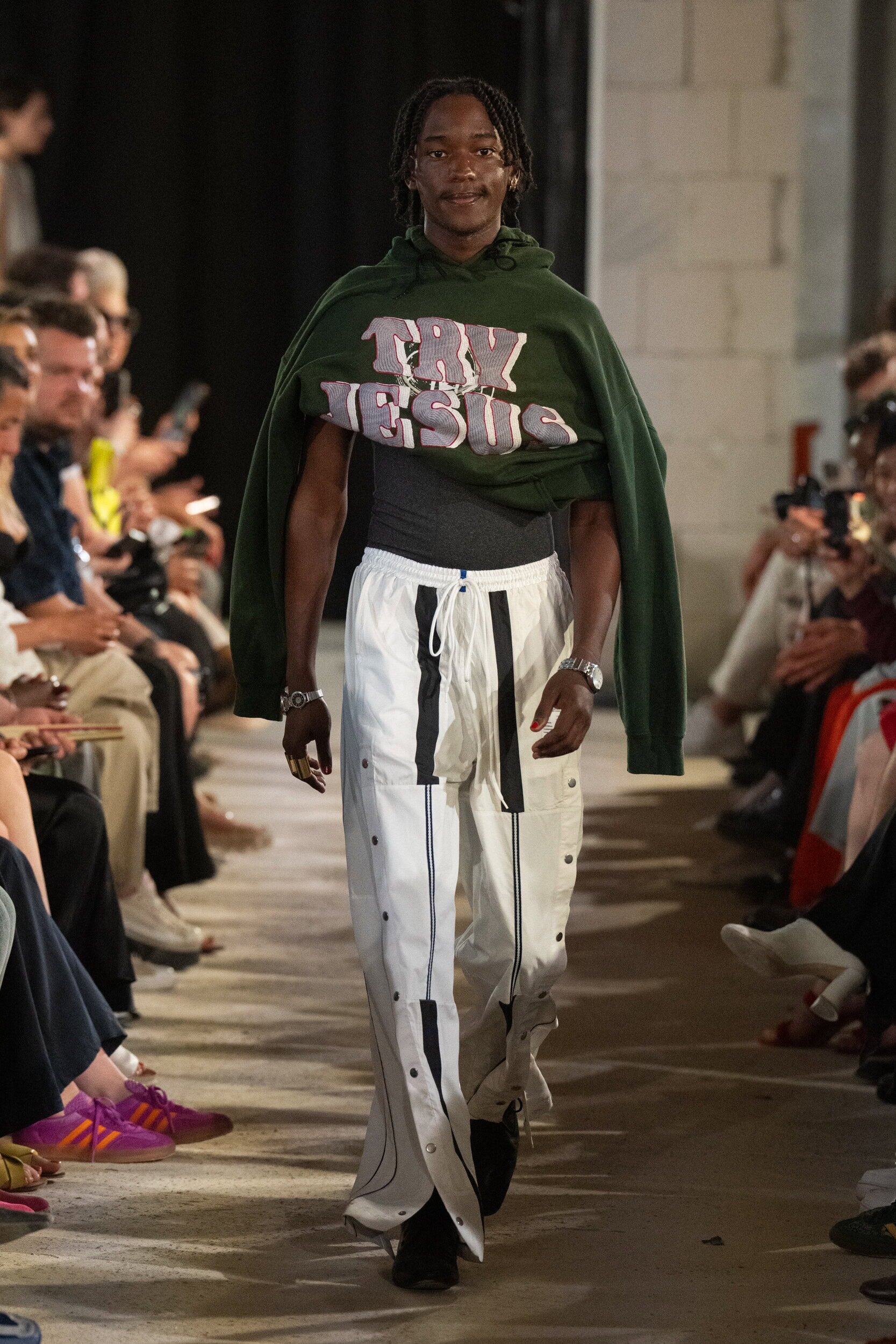
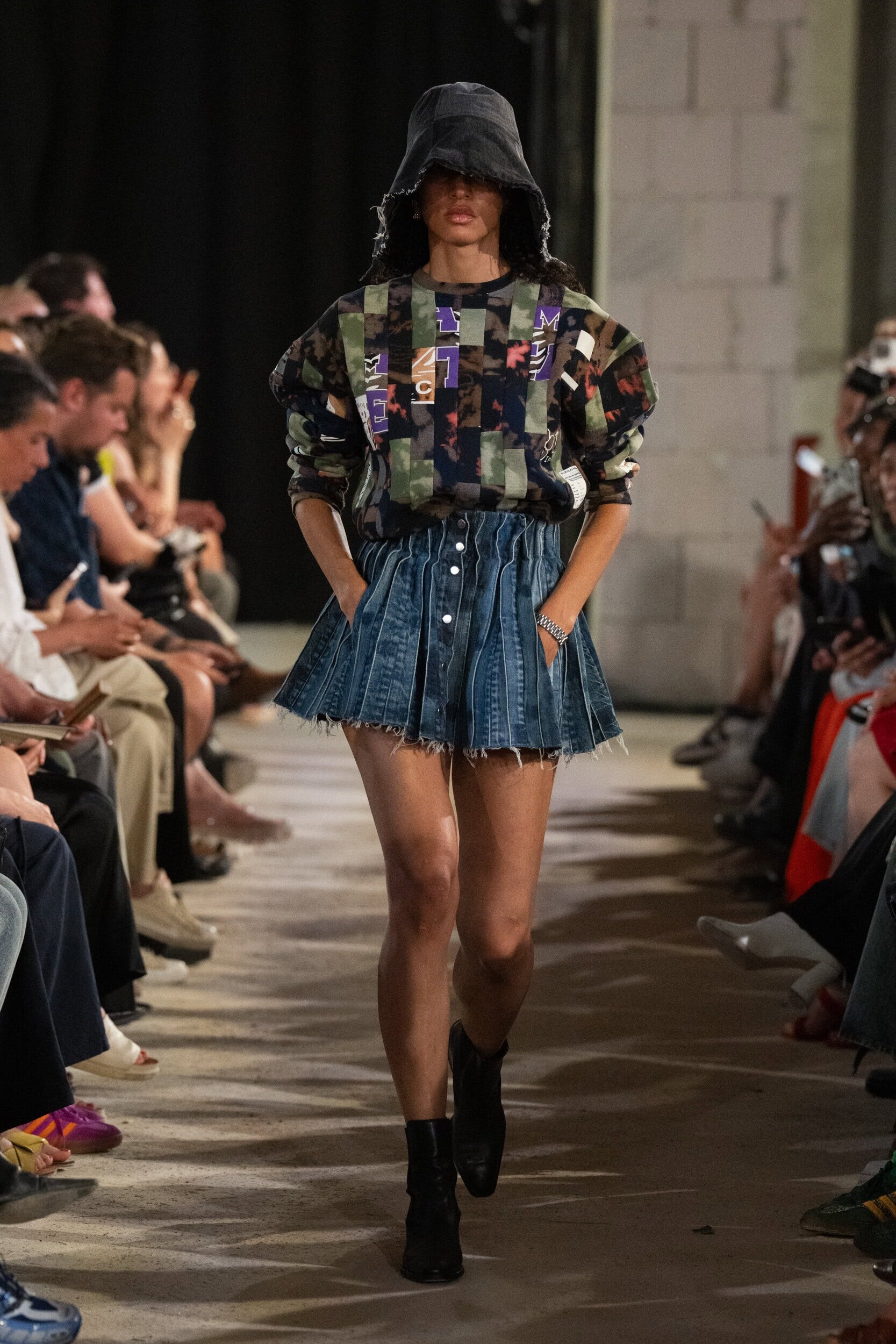
Orange Culture
Orange Culture showed for the first time in Berlin Fashion Week, wowing with their latest collection titled “In the Shadow,” which speaks to the complexities of mental health and the silent struggles that many people face. Designer Adebayo Oke-Lawal launched the brand in 2010/2011, with the cause of championing queer culture and the belief that “fashion can and should save lives.”
In the Pride flag, orange stands for non-binary and healing. In society, it tends to be underappreciated or miscommunicated, yet comprises such a broad range of nuance, complexities, and hues. As a secondary color, it can only be created by mixing other colors. He confronts societal norms with his gender fluid designs and combats suppressed expressions of Africanism by integrating Nigerian handwoven aso-oke fabrics, raffia ties, and traditional hand-beaded techniques into stunning looks in a color palette that invokes the rich natural landscape and oscillates as you move.
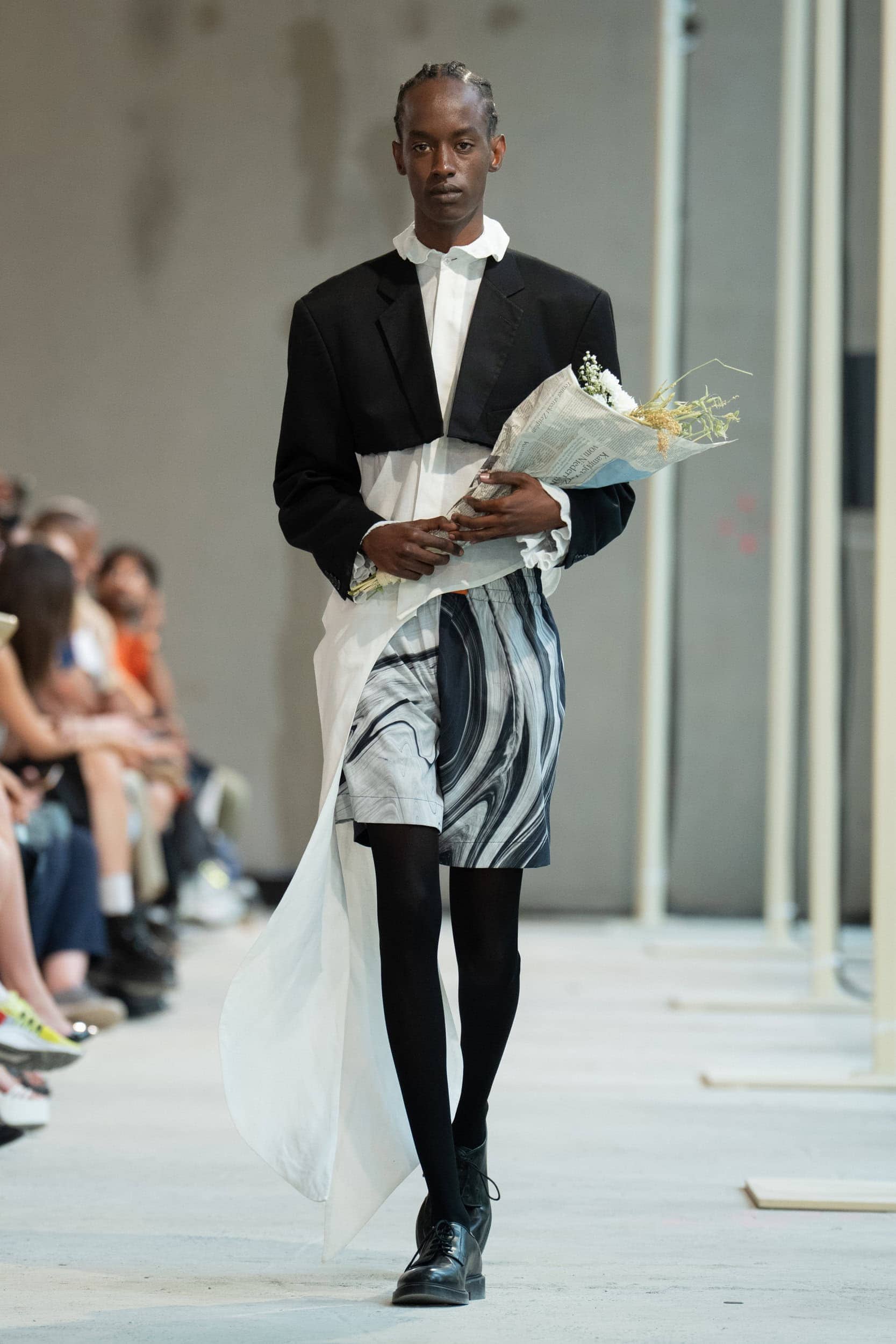
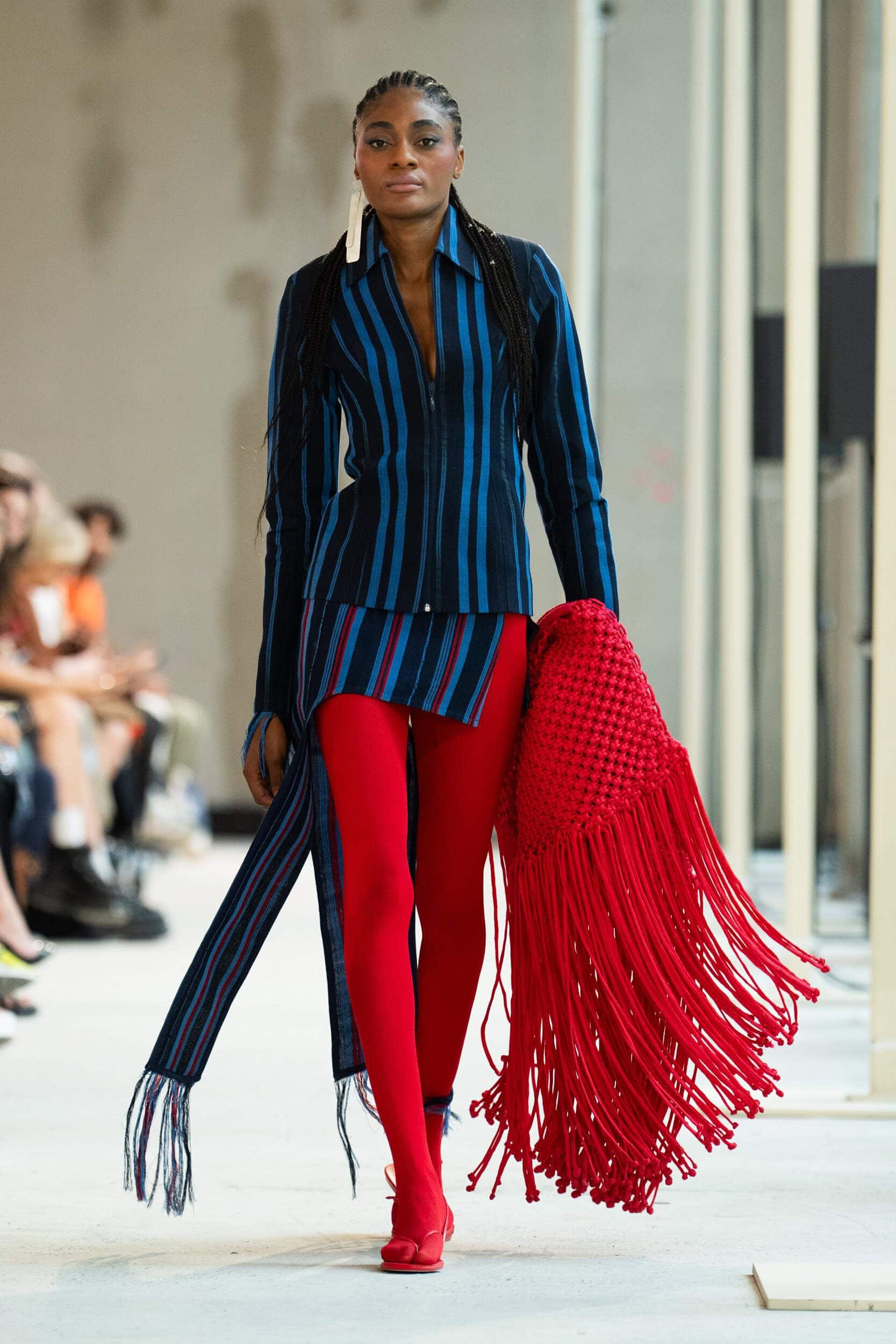
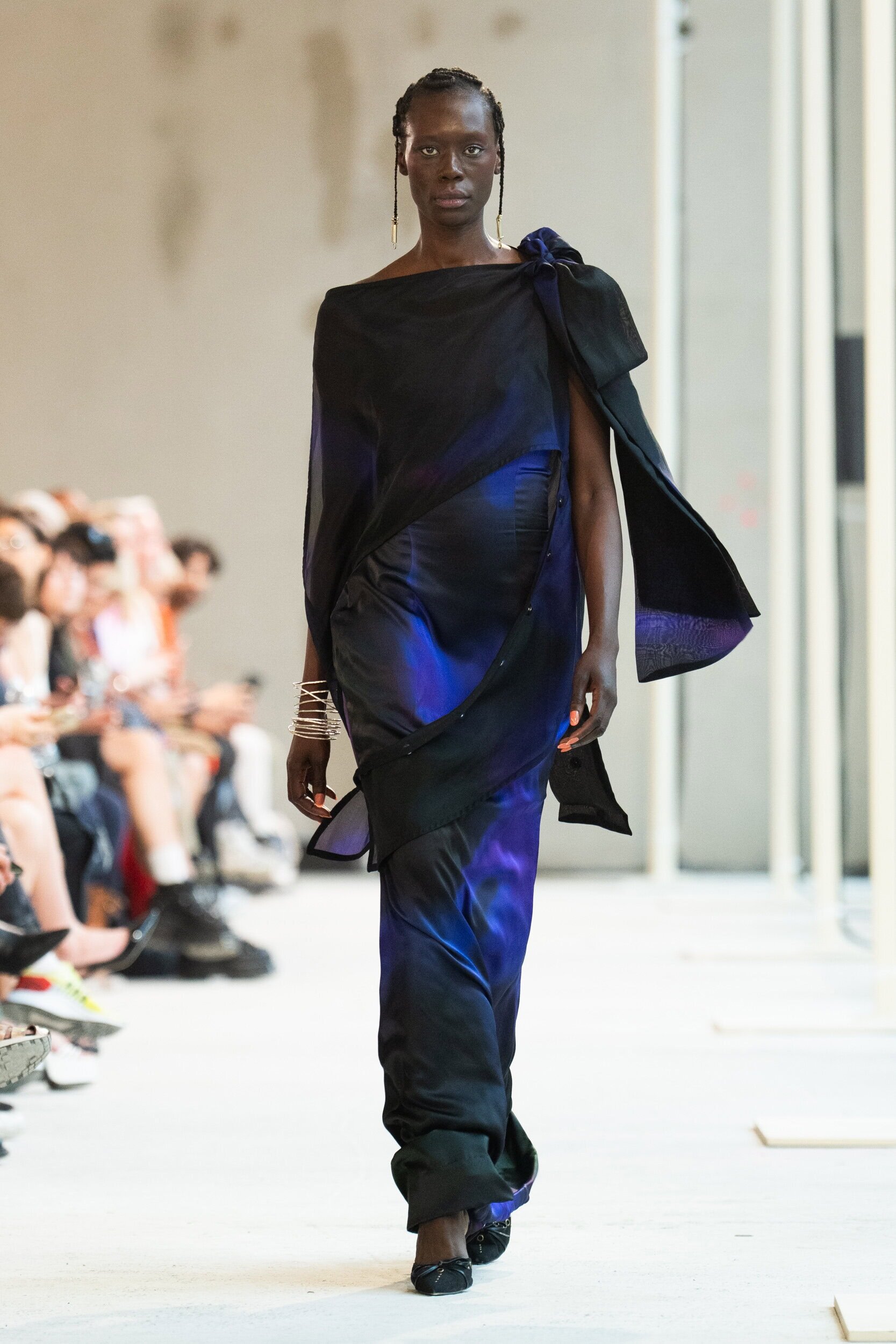
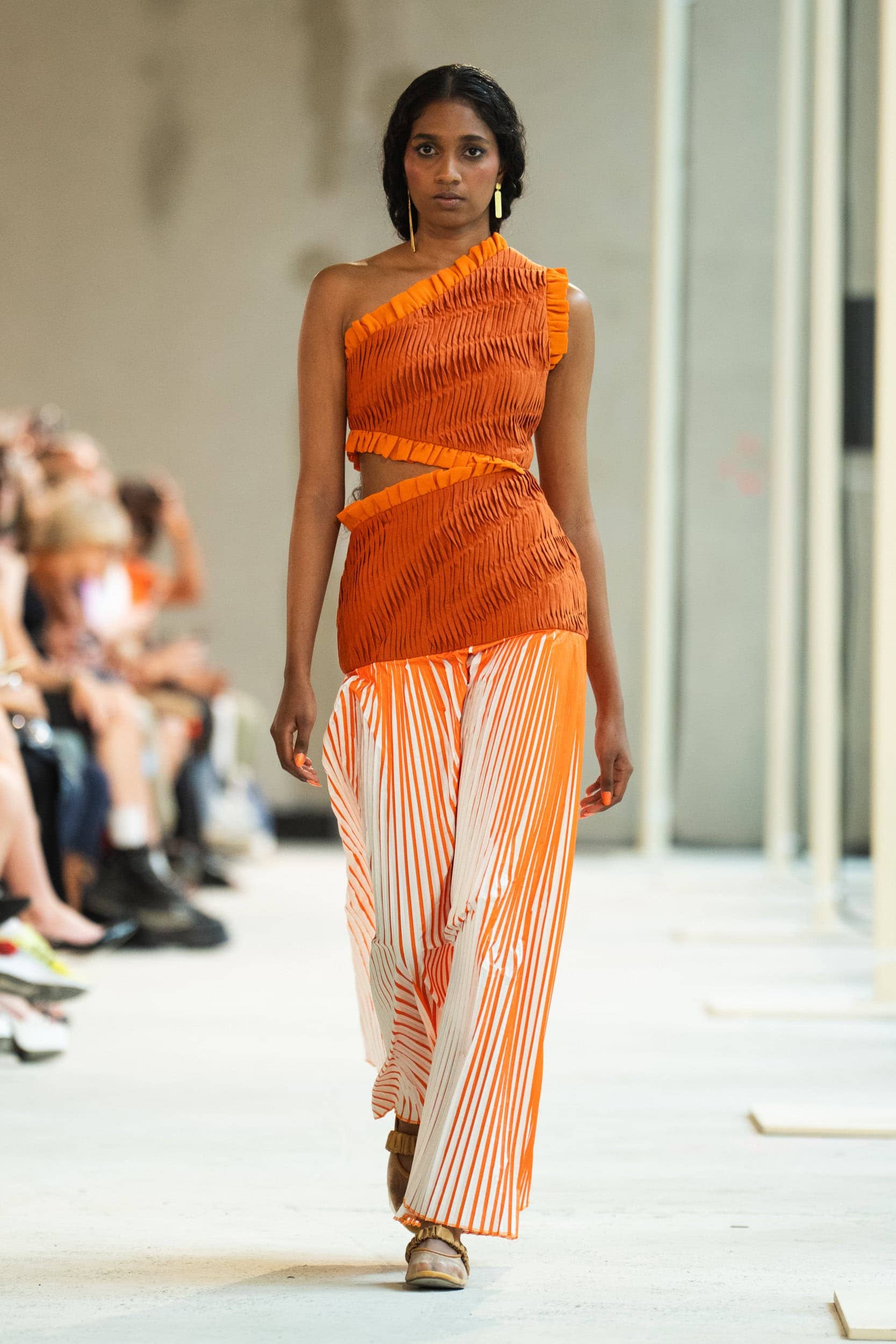
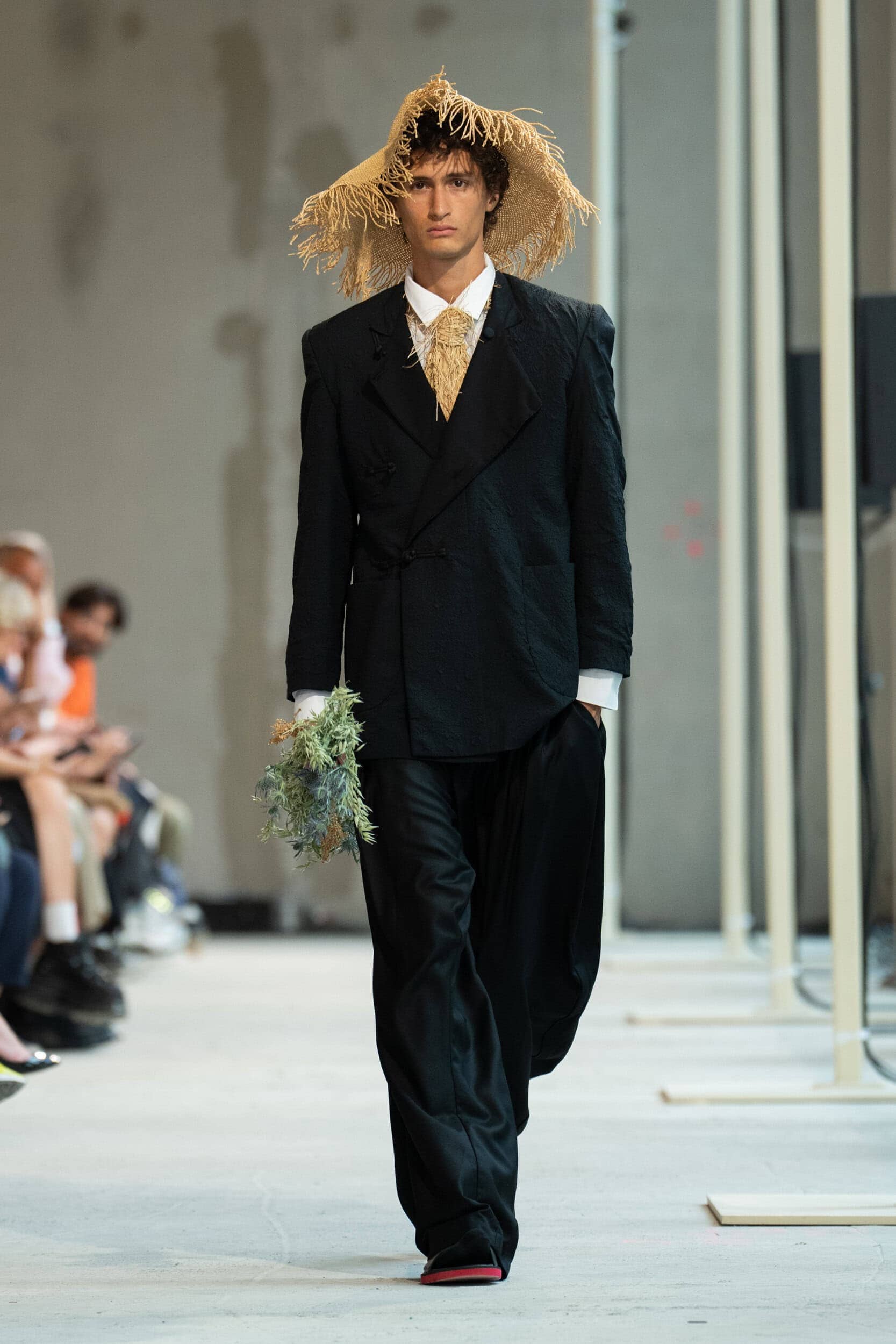
Marke
Marke also addresses the emotional and psychological aspects of queer coming-of-age, the hidden shame of forbidden love. “The Summer I Never Had: A Reflection on Queer Longing, Lost Summers, and the Armor of Identity” is an ode to queer youth and the three stages of identity development in a hostile environment: the mask of concealment, the acceptance of self, and the haunting fantasy of a memory denied.
The elegant tailoring of the blazers and suiting are a nod to the architecture of conformity, yet their cotton/silk or wool/silk mélange conceal an underlying softness and quiet resistance to societal expectations. The liberation that comes with self acceptance sees the structures relaxing, with more voluminous silhouettes and a celebration of the body – those bubble hem short shorts are too cute. And the reverie is a reimagining of the tender times not lived, but reclaimed, with the finale forming poetic tableaus of intimate gatherings. Designer Mario Keine has a signature aesthetic sensibility that suggests rarefied surroundings – even his “sweats” are beautifully tailored in luxurious materials. The hushed tones and romantic nostalgia feel like a hug of gentle acceptance.
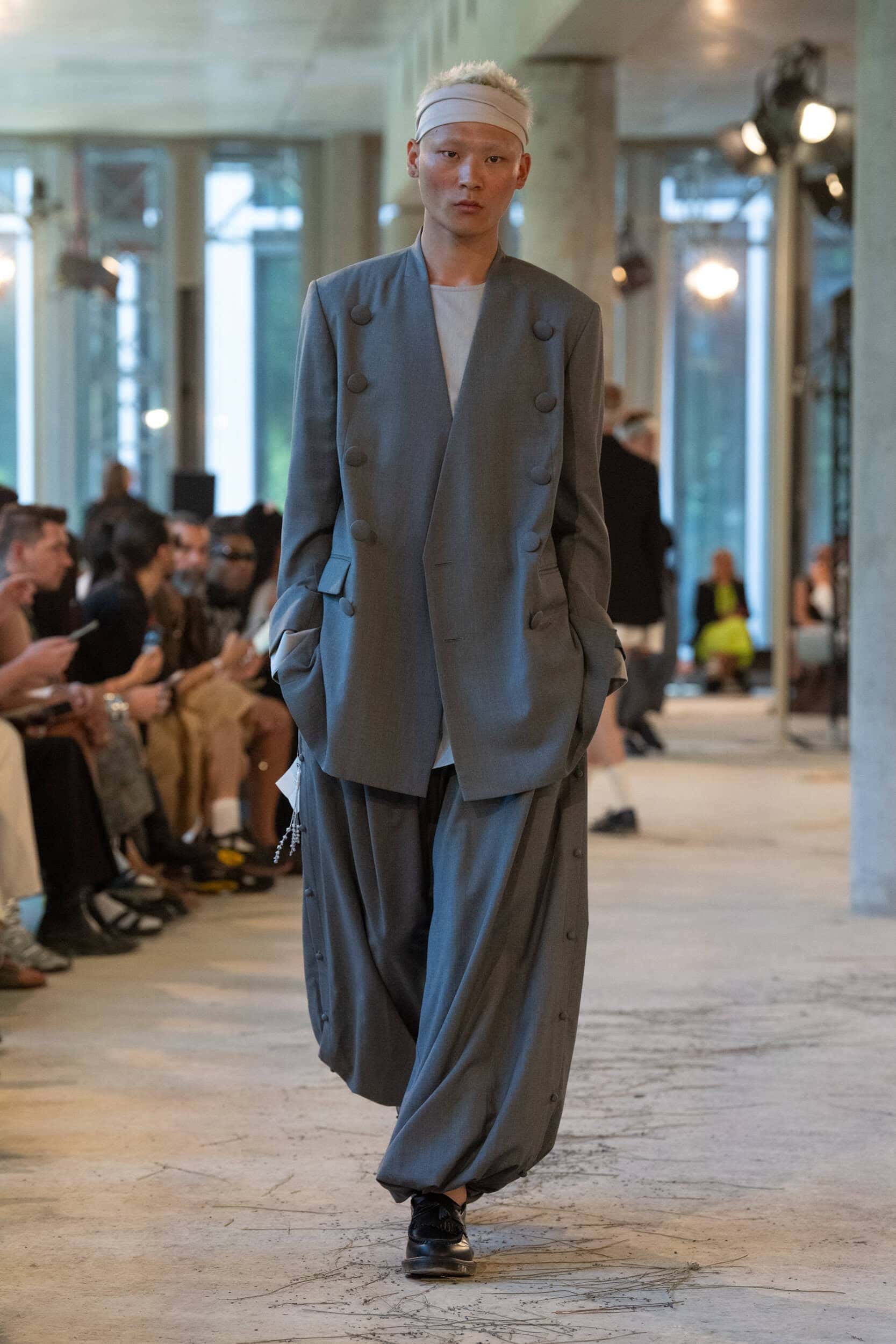
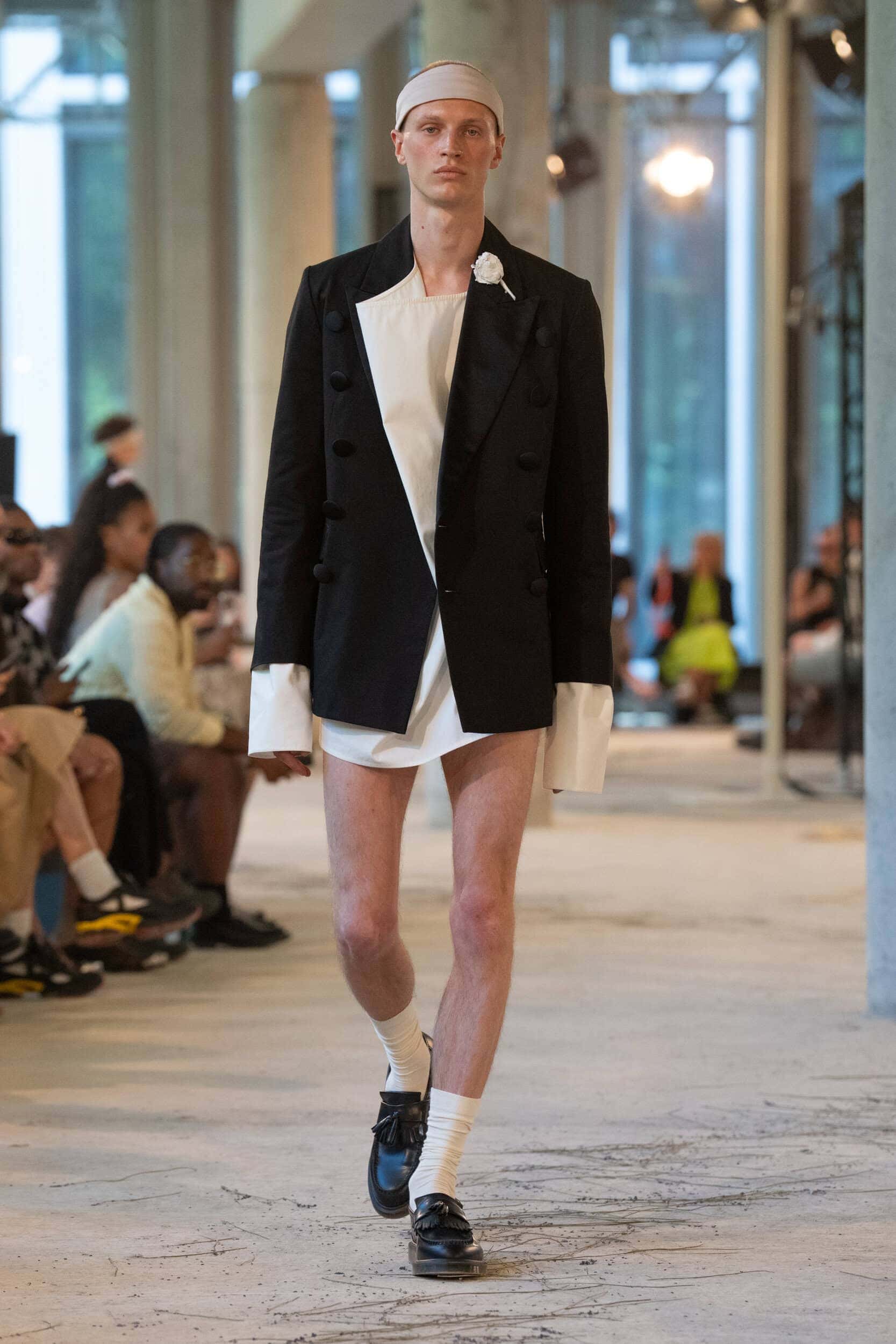
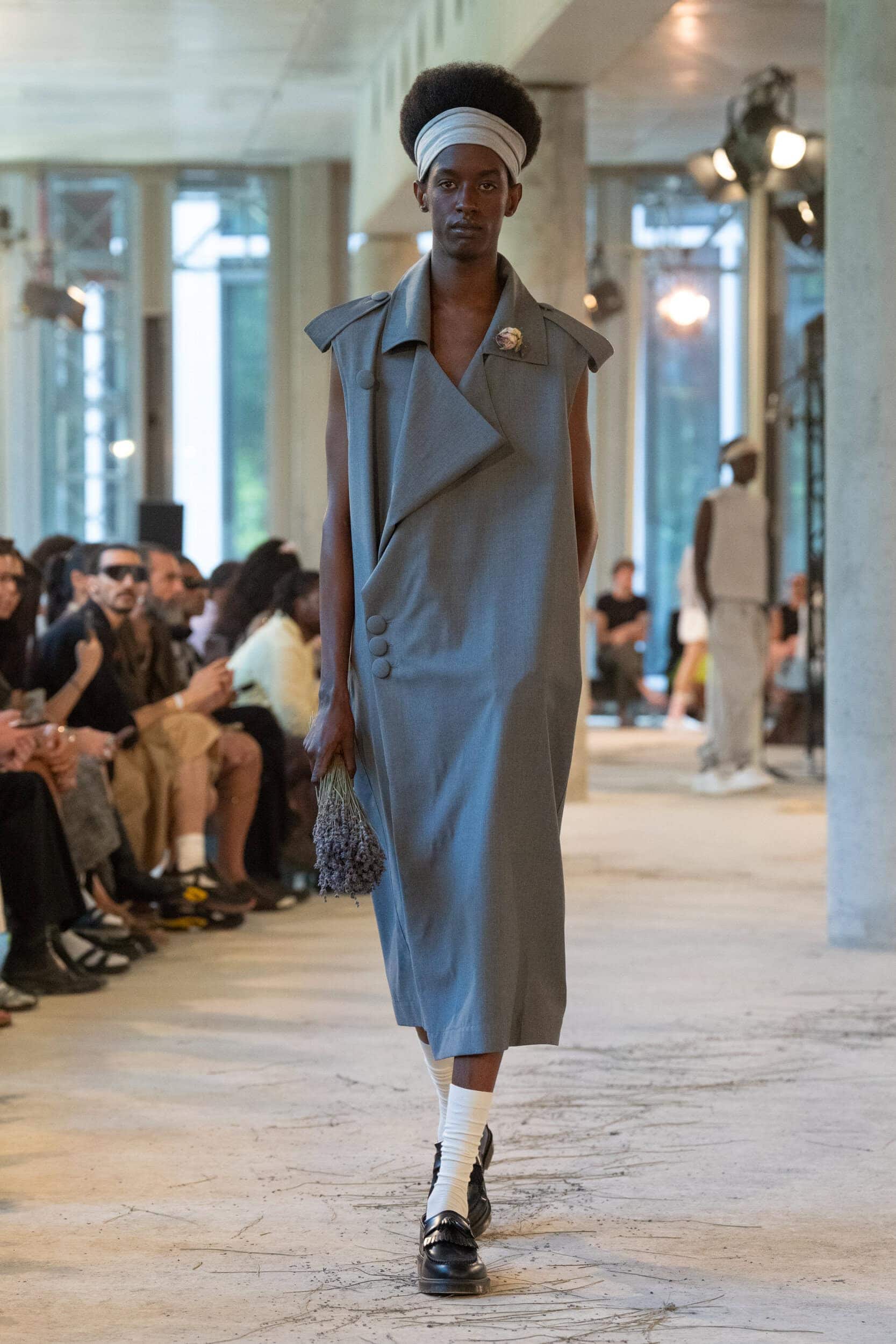
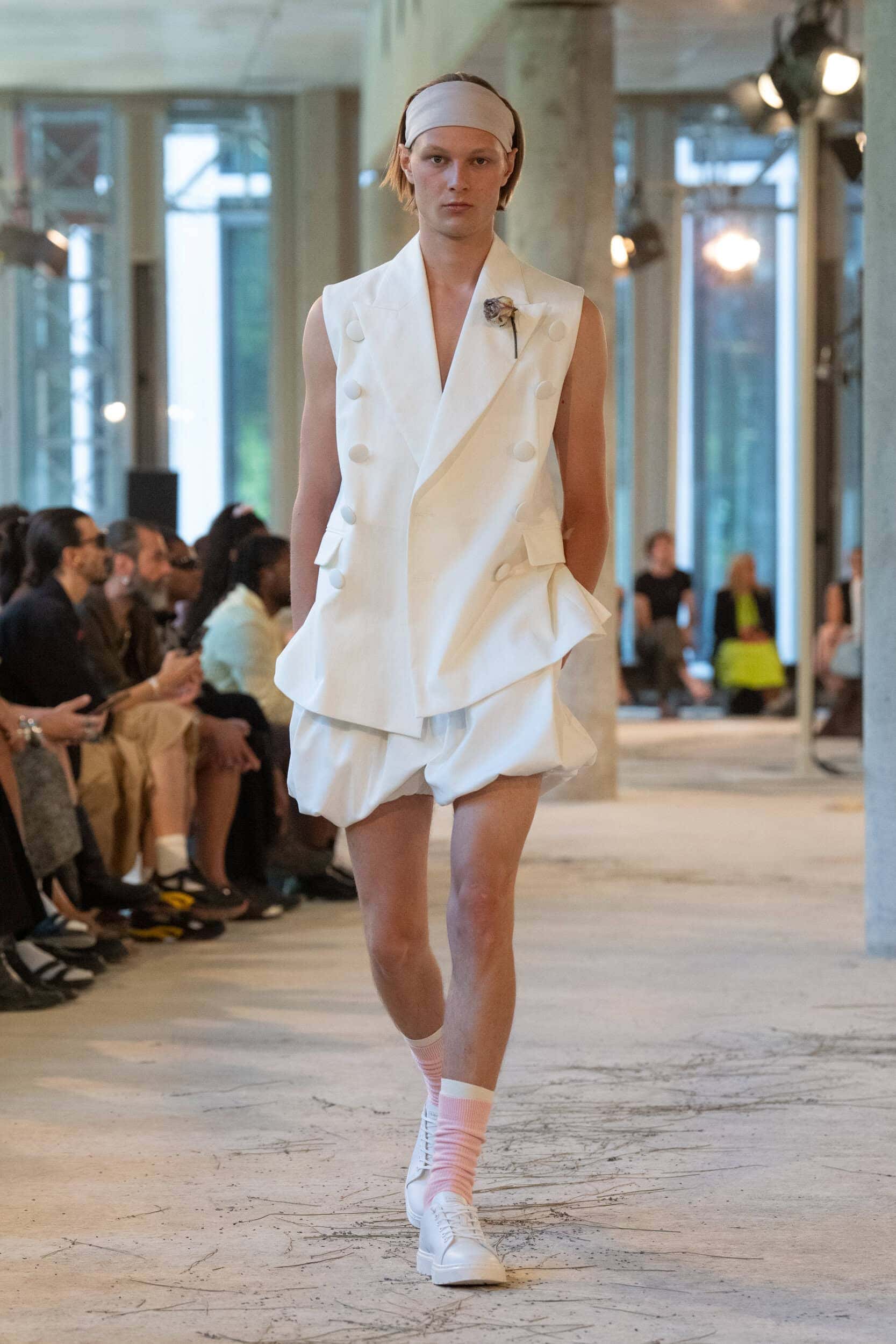
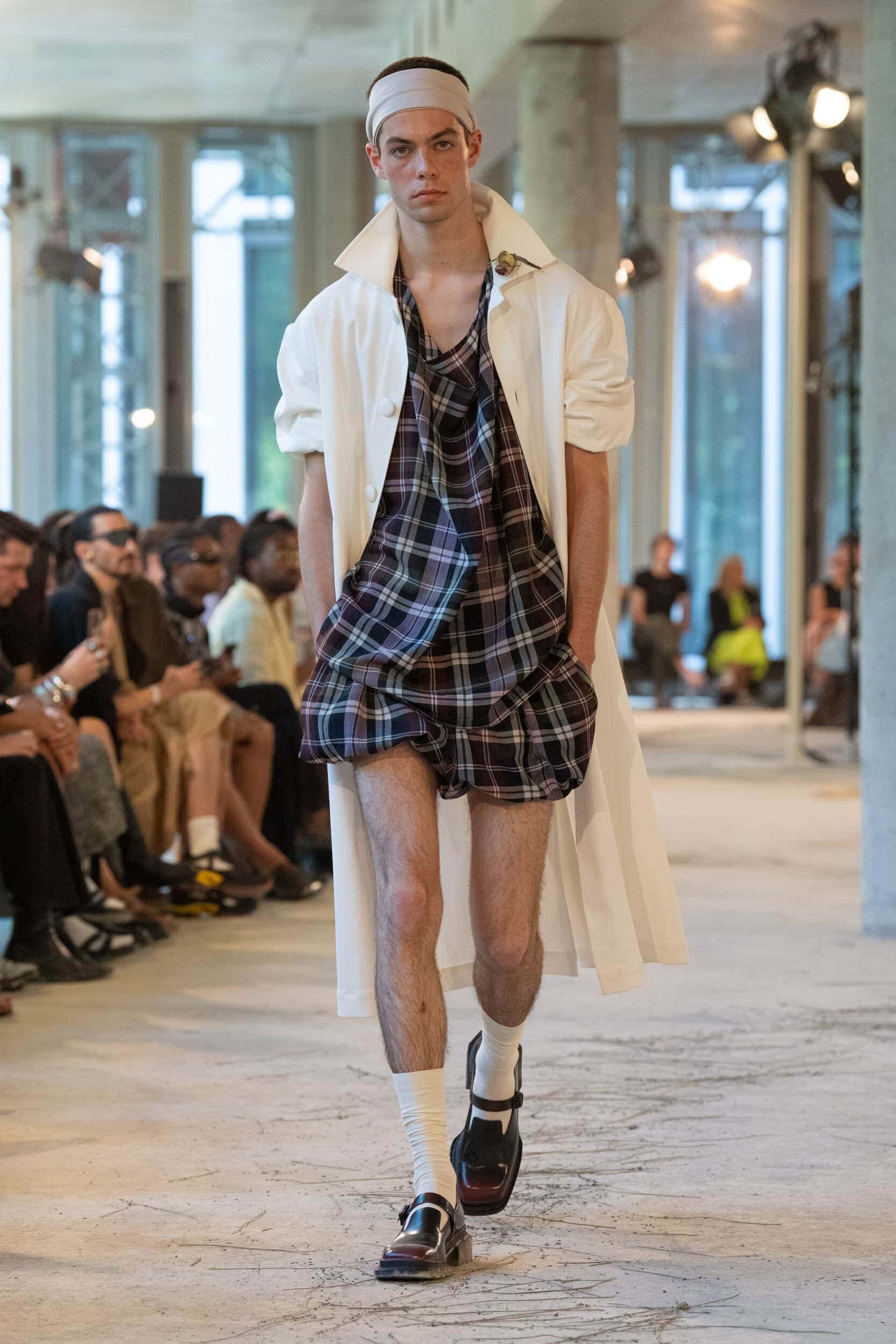
Richert Beil
Richert Beil’s collection “Milieuschutz,” or preservation of the neighborhood, is a reflection on the past and reimagining of the future, while protecting values and holding space for dreams. After a decade of the brand and personal loss in the family, Jale Richert and Michele Beil explored the cycle of beginnings and endings as they moved into a new studio.
The black roses in the prints, hanging from the ceiling, and placed on our seats are a
romantic symbol of growth, decay, and renewal. With a commitment to heritage and poetry in the face of fashion’s turbo speed, the lingerie-inspired techniques and hand-finished details honor the time it takes for craftsmanship. And staying true to their DNA, traditional German garments such as lederhosen were made with latex. Because nothing says Berlin underground more than latex.
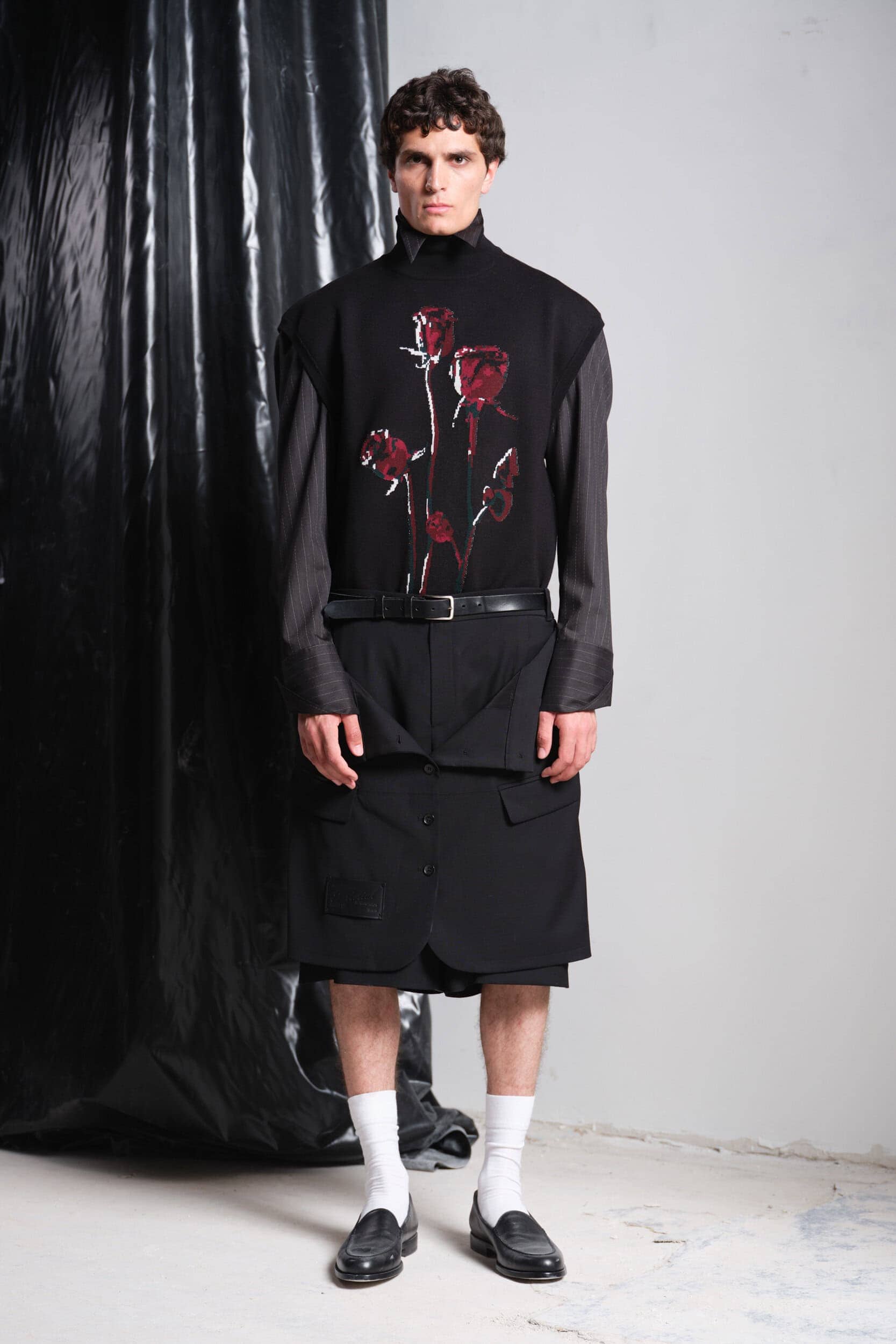
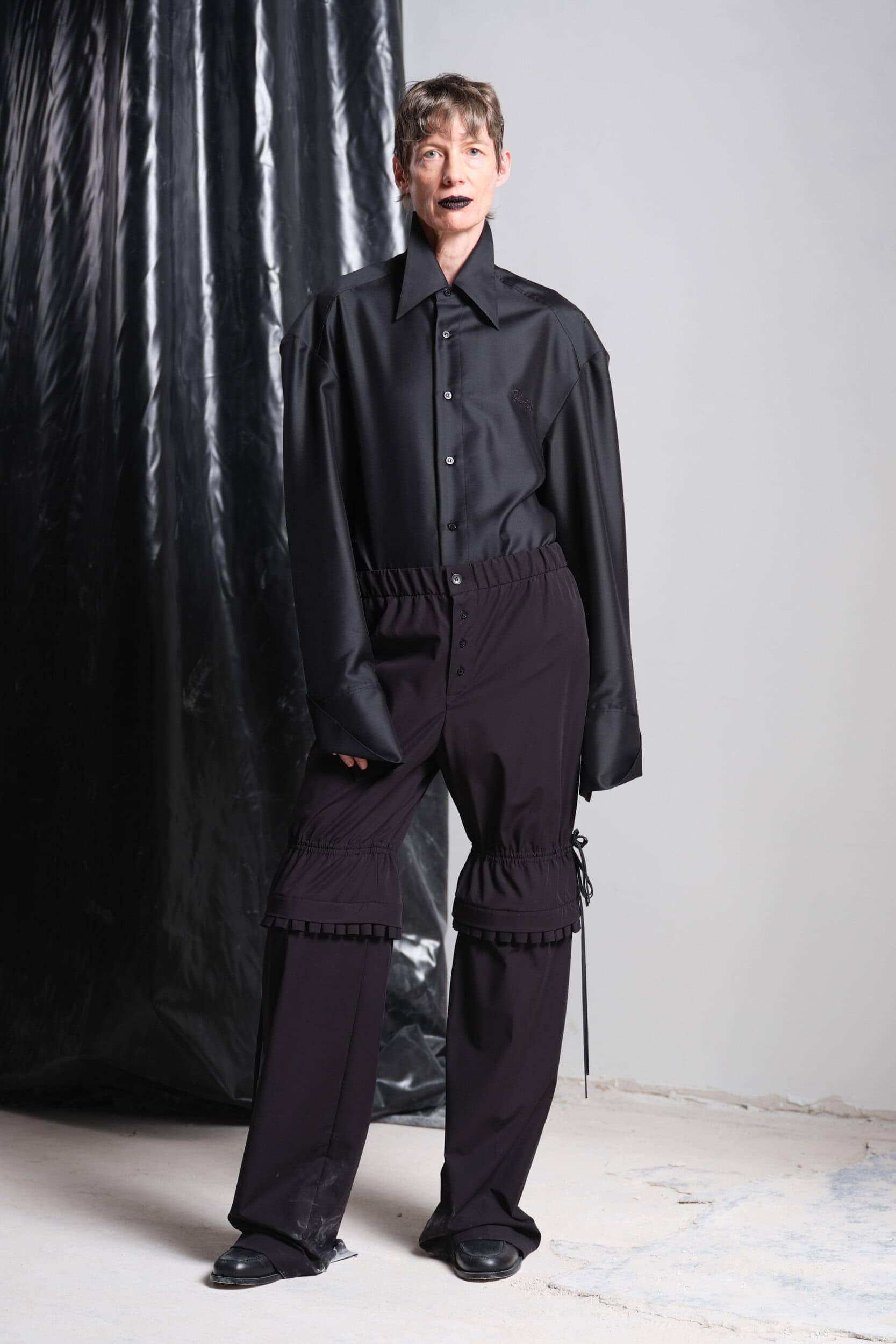
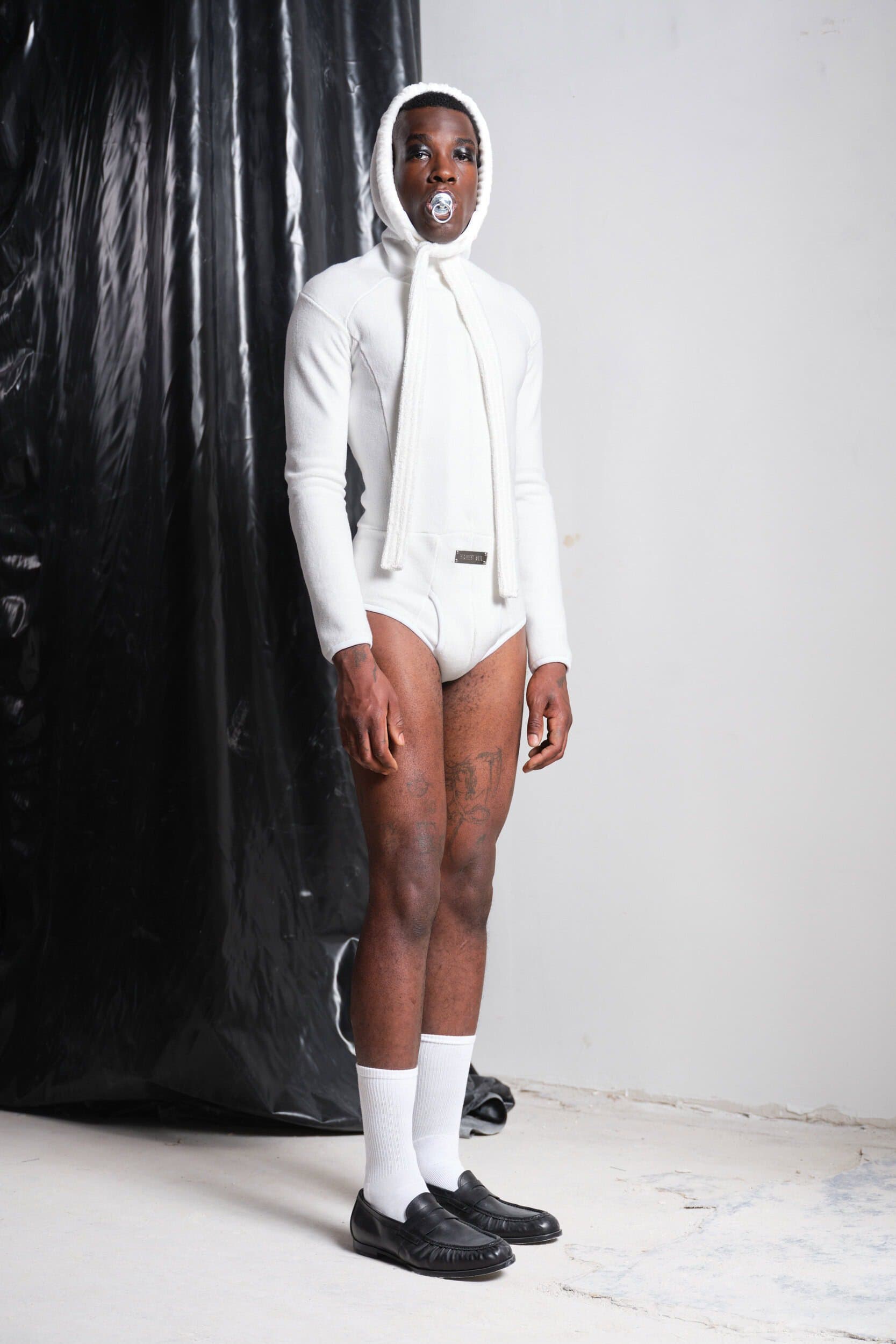
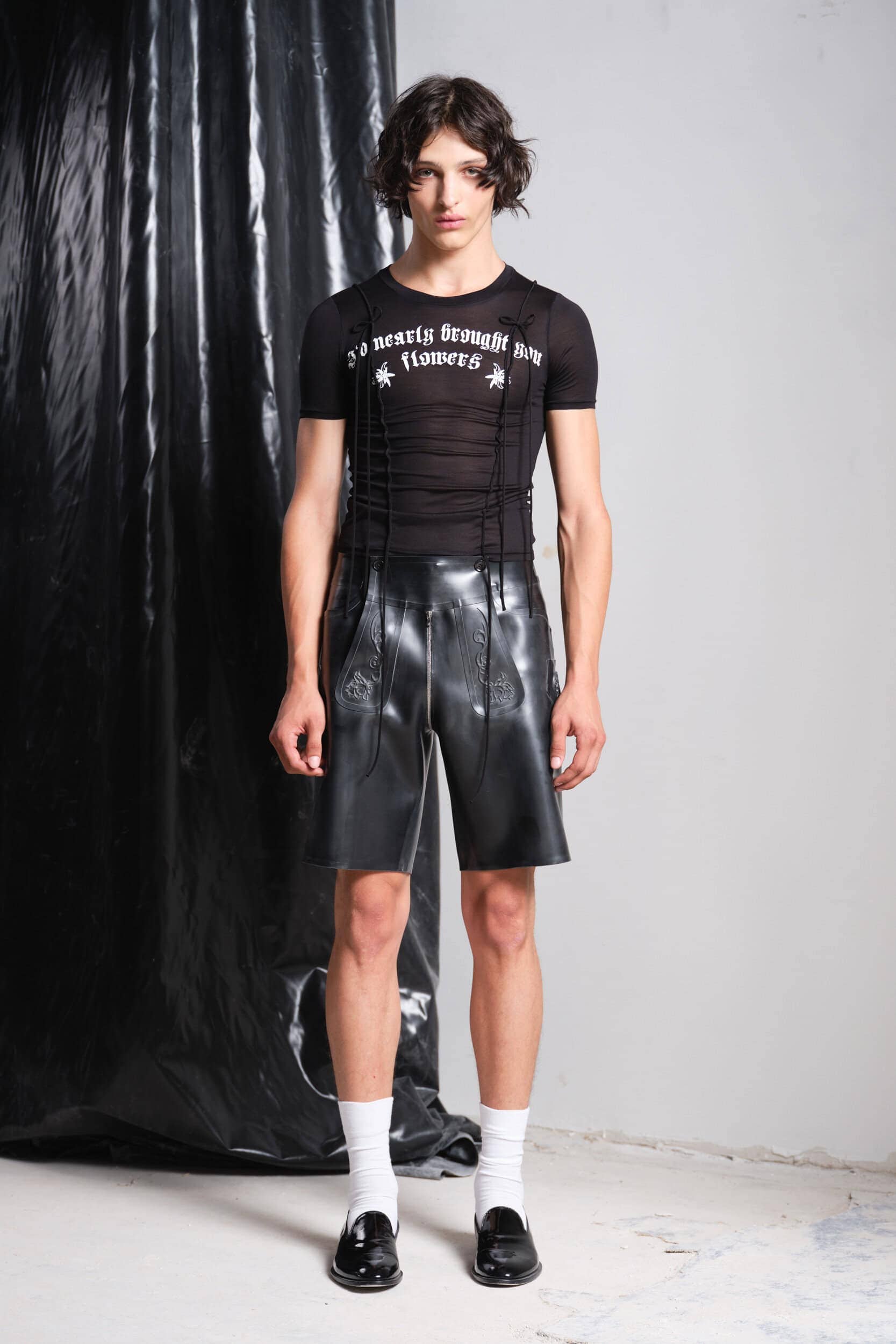
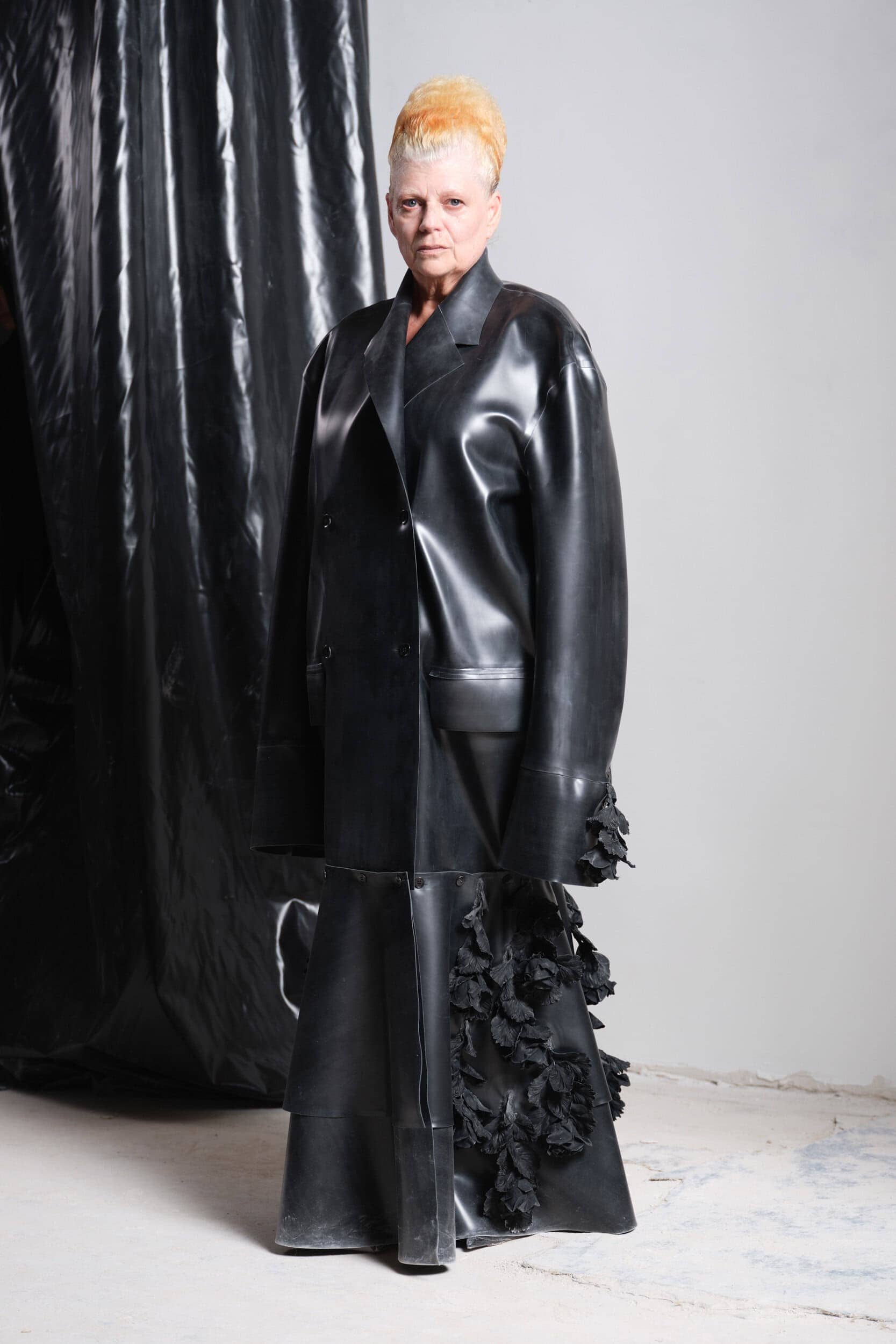
Lueder
Lueder staged a modern reframing of the myth of Saint George and the Dragon in a fashion play titled “SLAY.” The dragon in this case is “a shifting metaphor for structural power, digital delusion, and emotional inheritance” and the battle one of “present-day resistance, transformation, and psychic armor.” The twisted seams create protective volumes and silhouettes, while color treatments evoke the scales of a dragon or knitwear mimics
chainmail. In a modern struggle where the hero might be a single mother or the dragon the voice inside your phone or the one inside your head, salvation lies in evolving and transformation, as creative director Marie Lueder does with her designs.
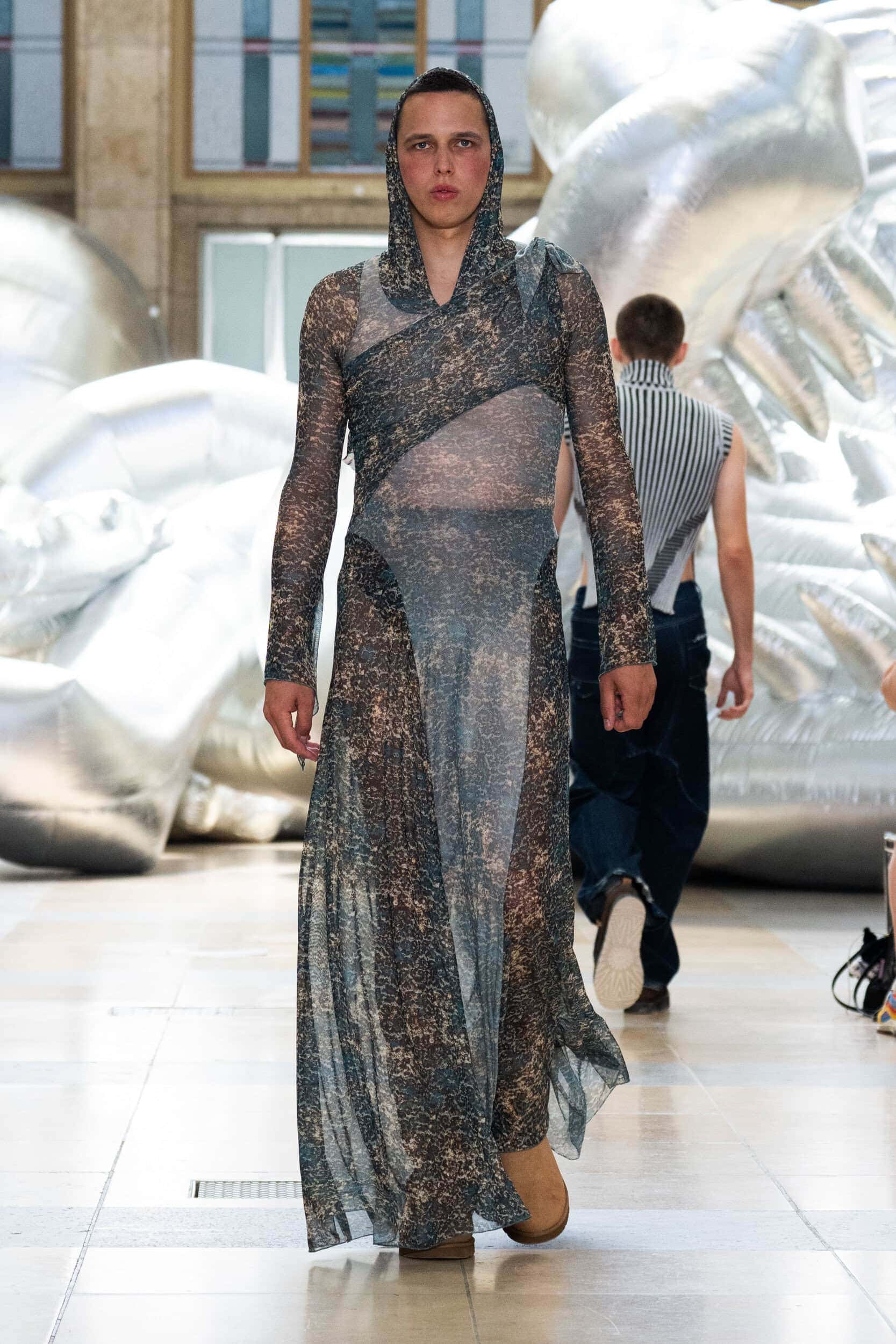
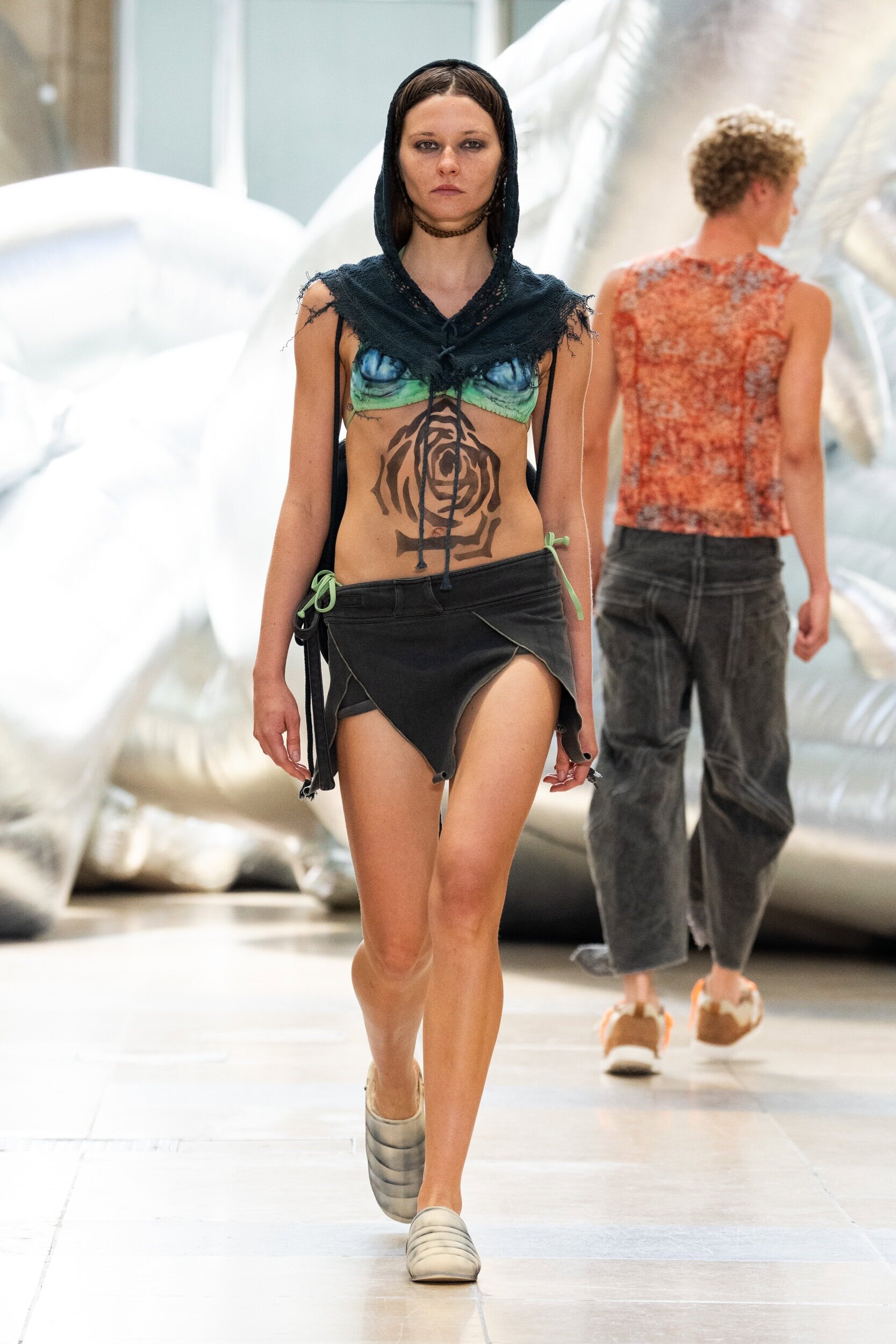
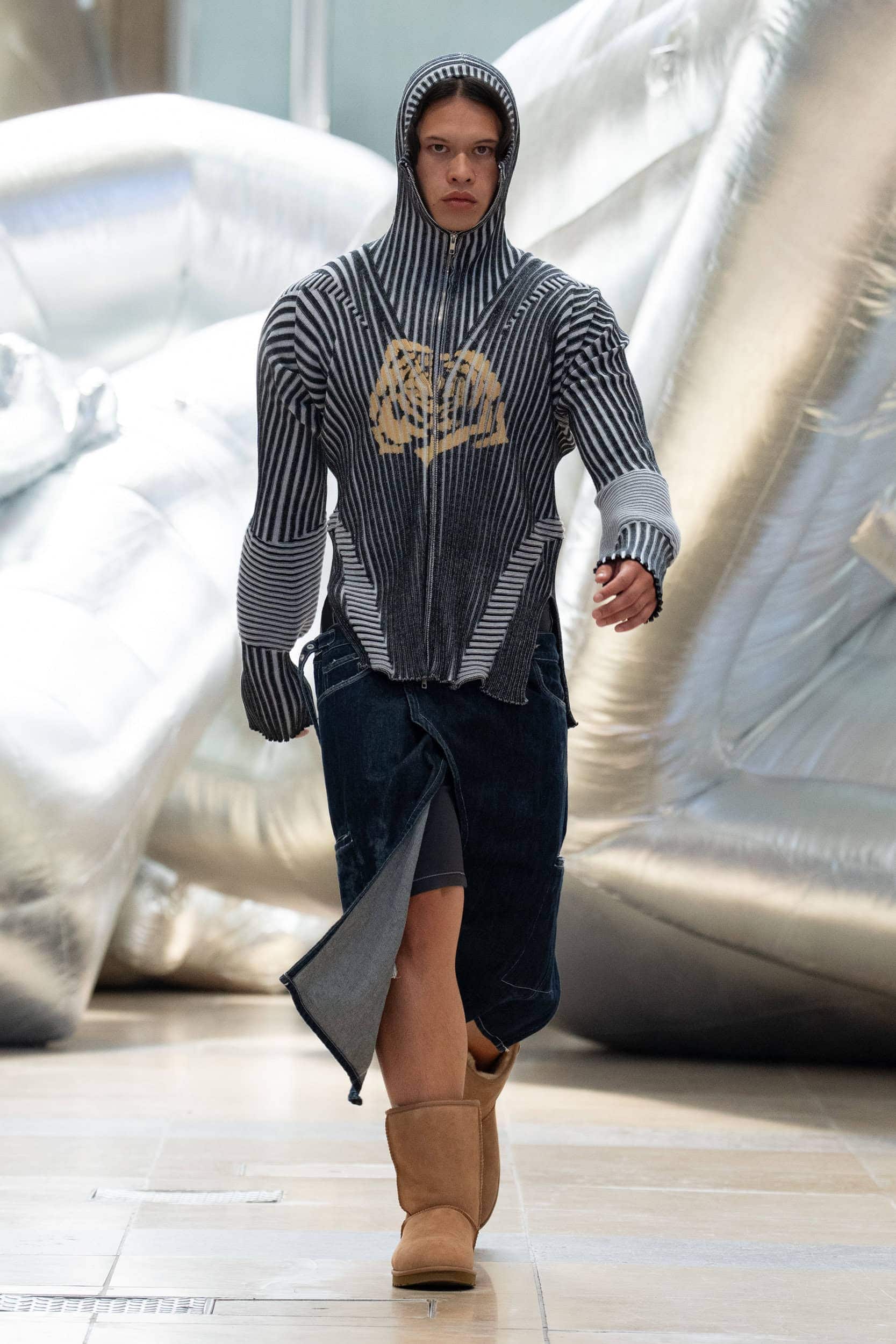
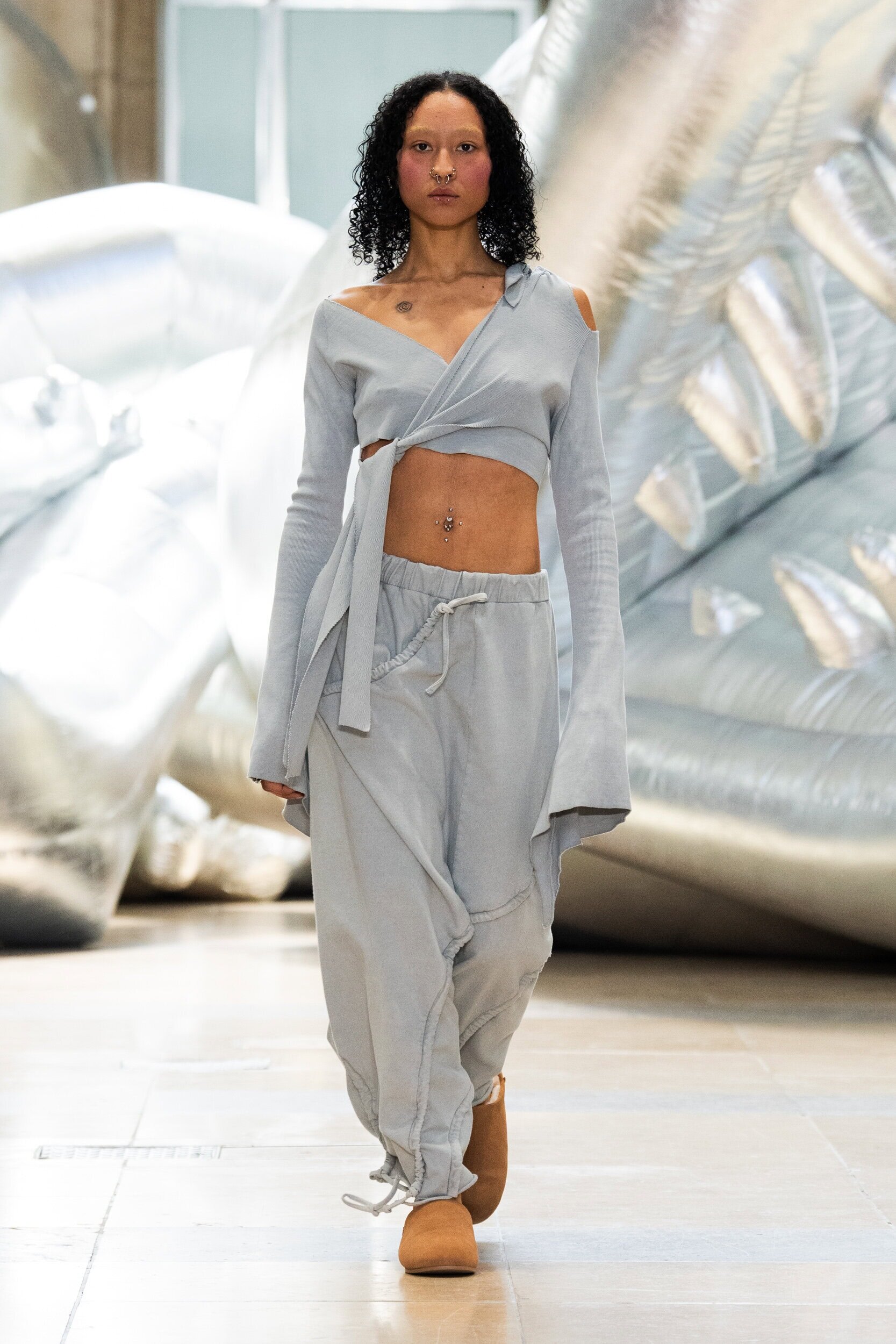
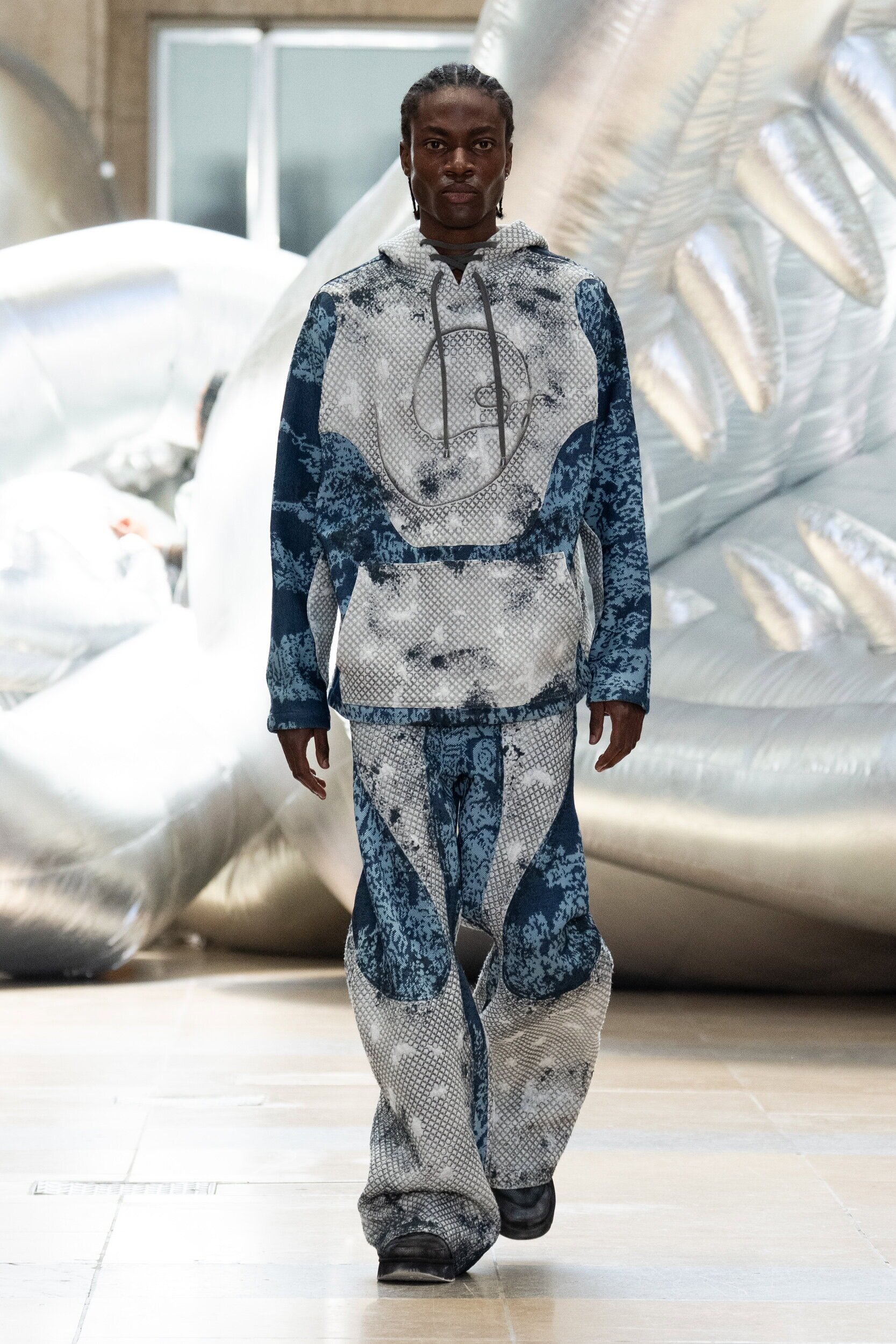
SF10G
SF1OG was inspired by historic artworks depicting women driven mad by love and longing. Creative director Rosa Dahl’s turning inward and nostalgia for teenage intensity was a recurring impulse in our times of political volatility and social unease. This Berlin favorite brand’s wildly popular indie sleaze aesthetic from last season was seen all over Berlin Fashion Week and they wisely continued owning that space. True to their brand DNA of working with repurposed antique fabrics and craftsmanship, they custom-developed textiles and leathers in close collaboration with artisanal makers for stunning showstoppers such as tattooed leather corsets, distressed glitter pants, and paillette cape.
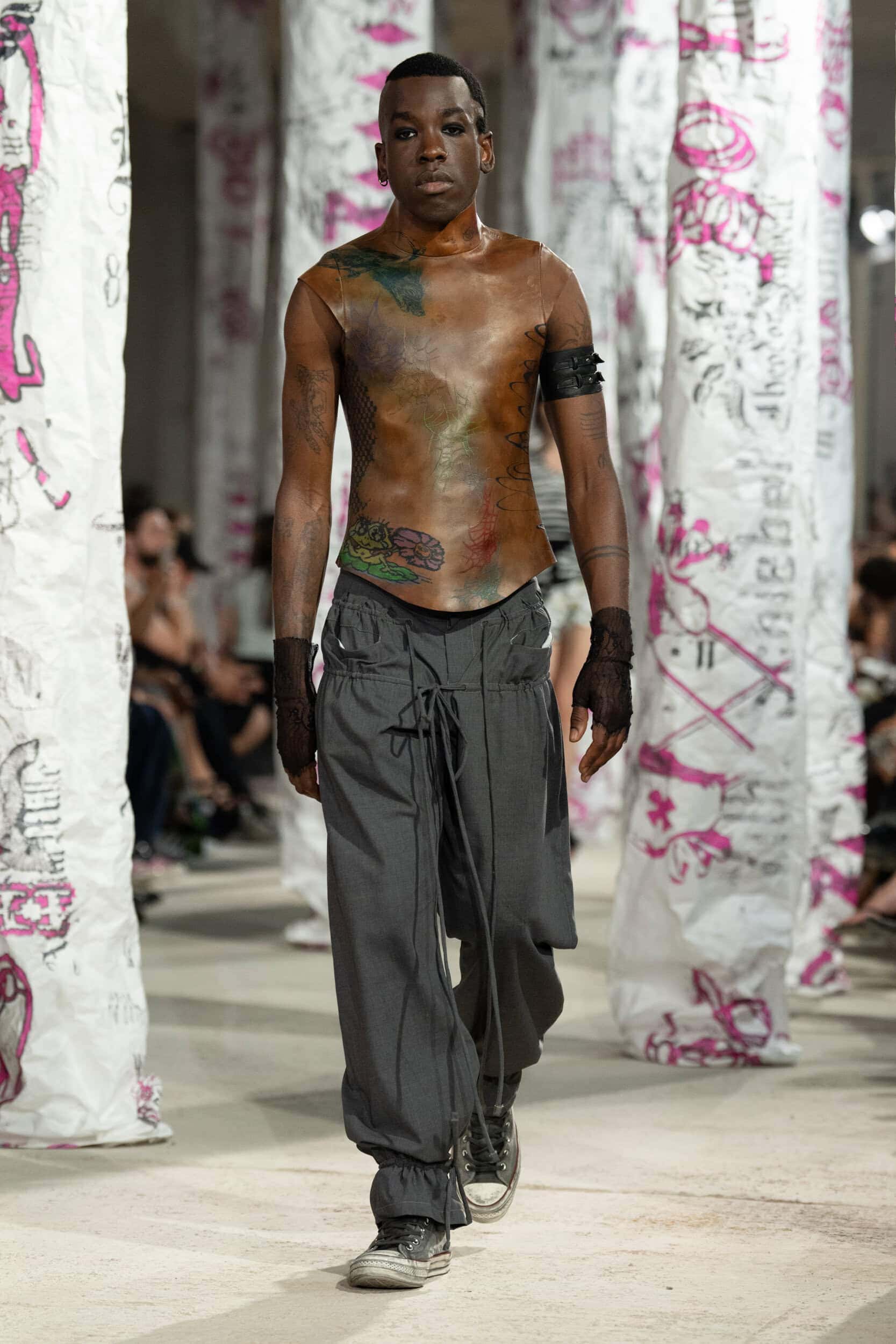
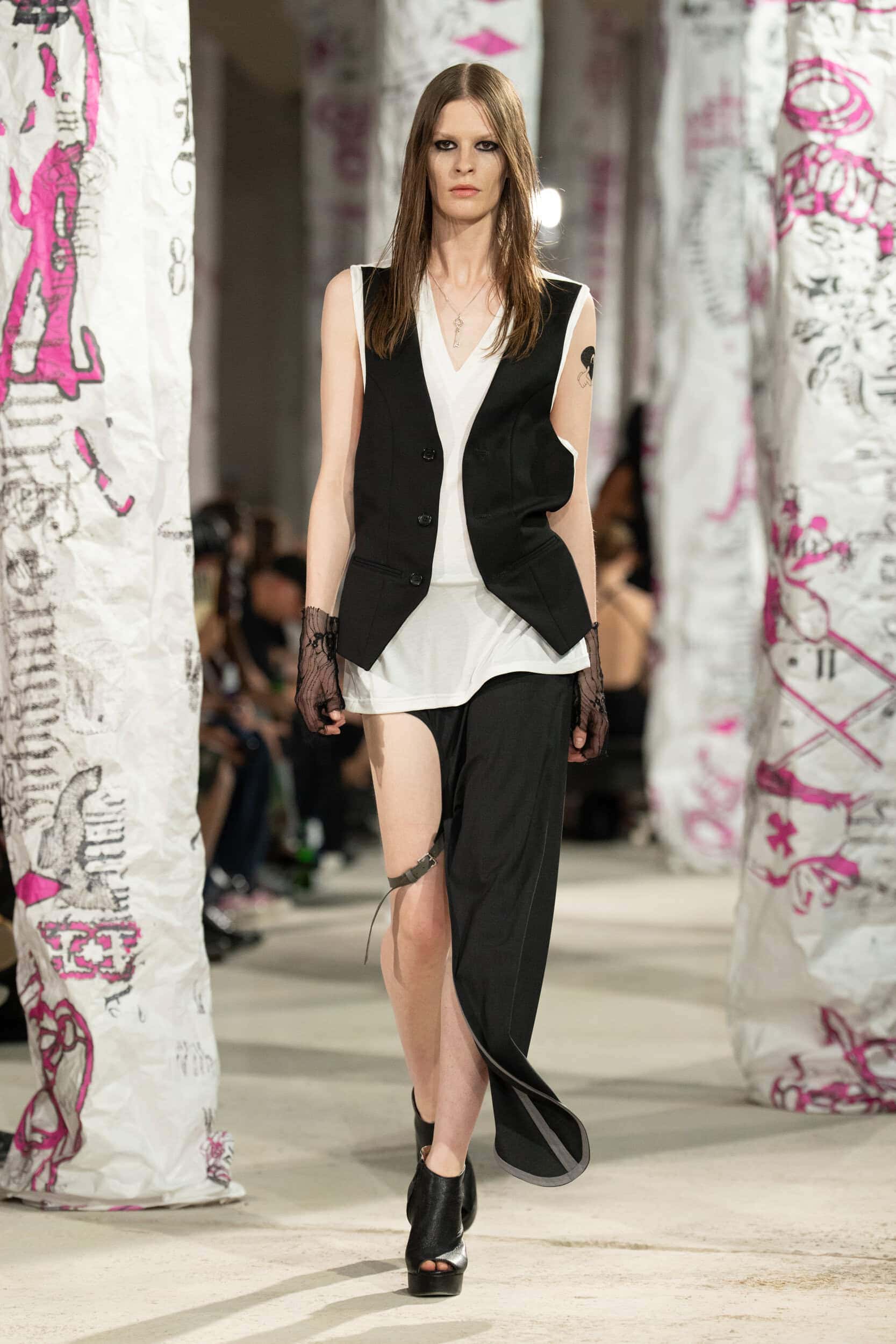
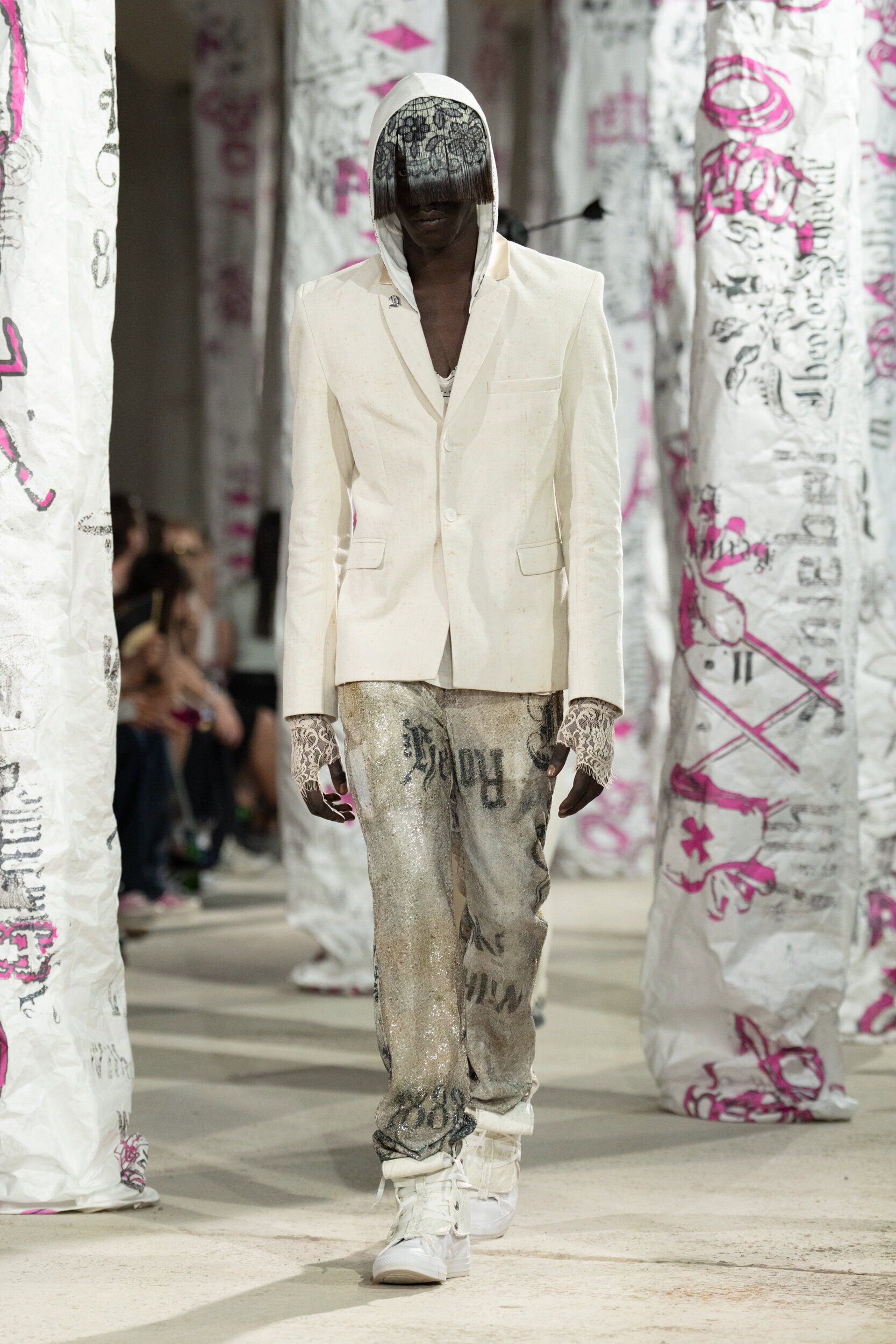
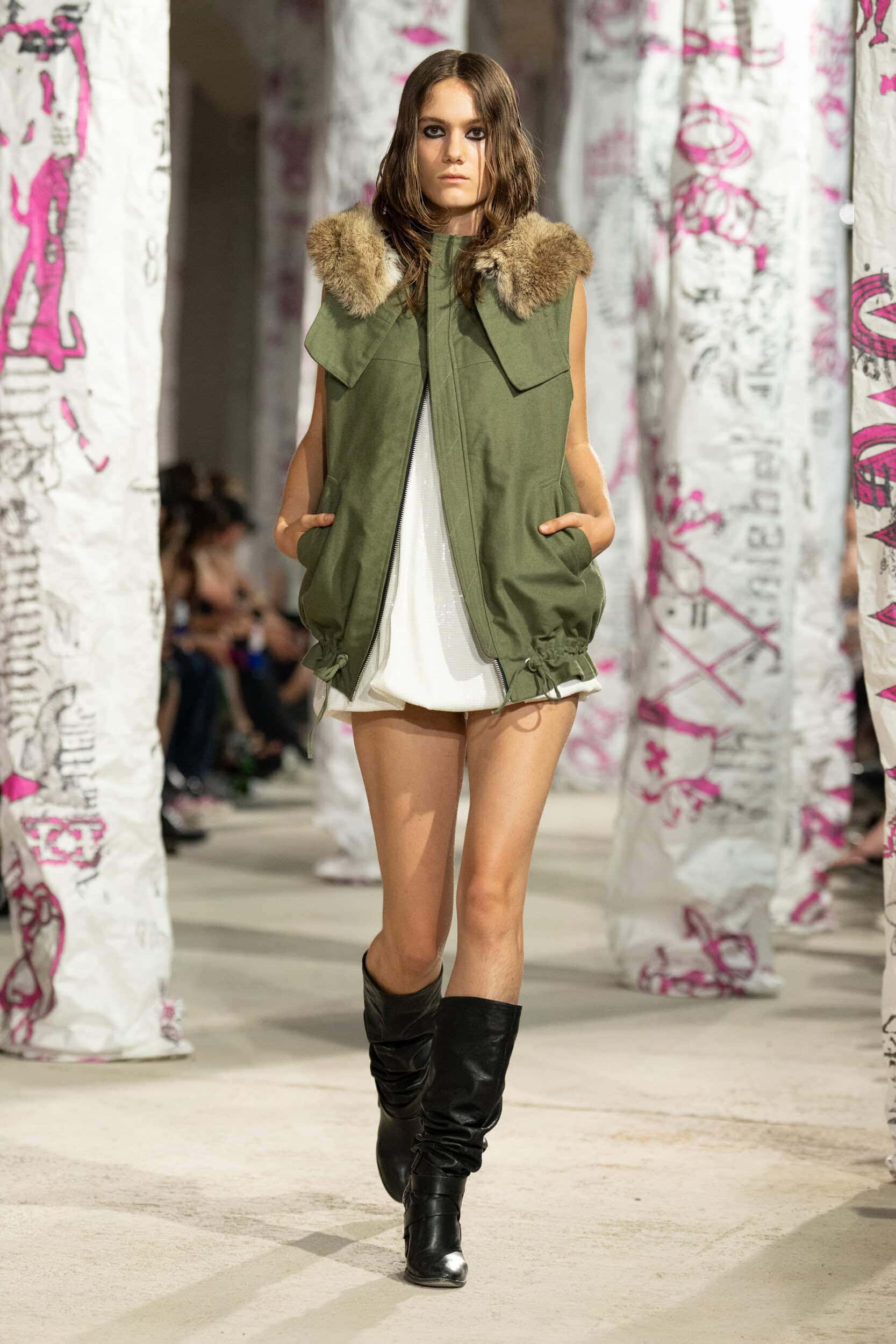
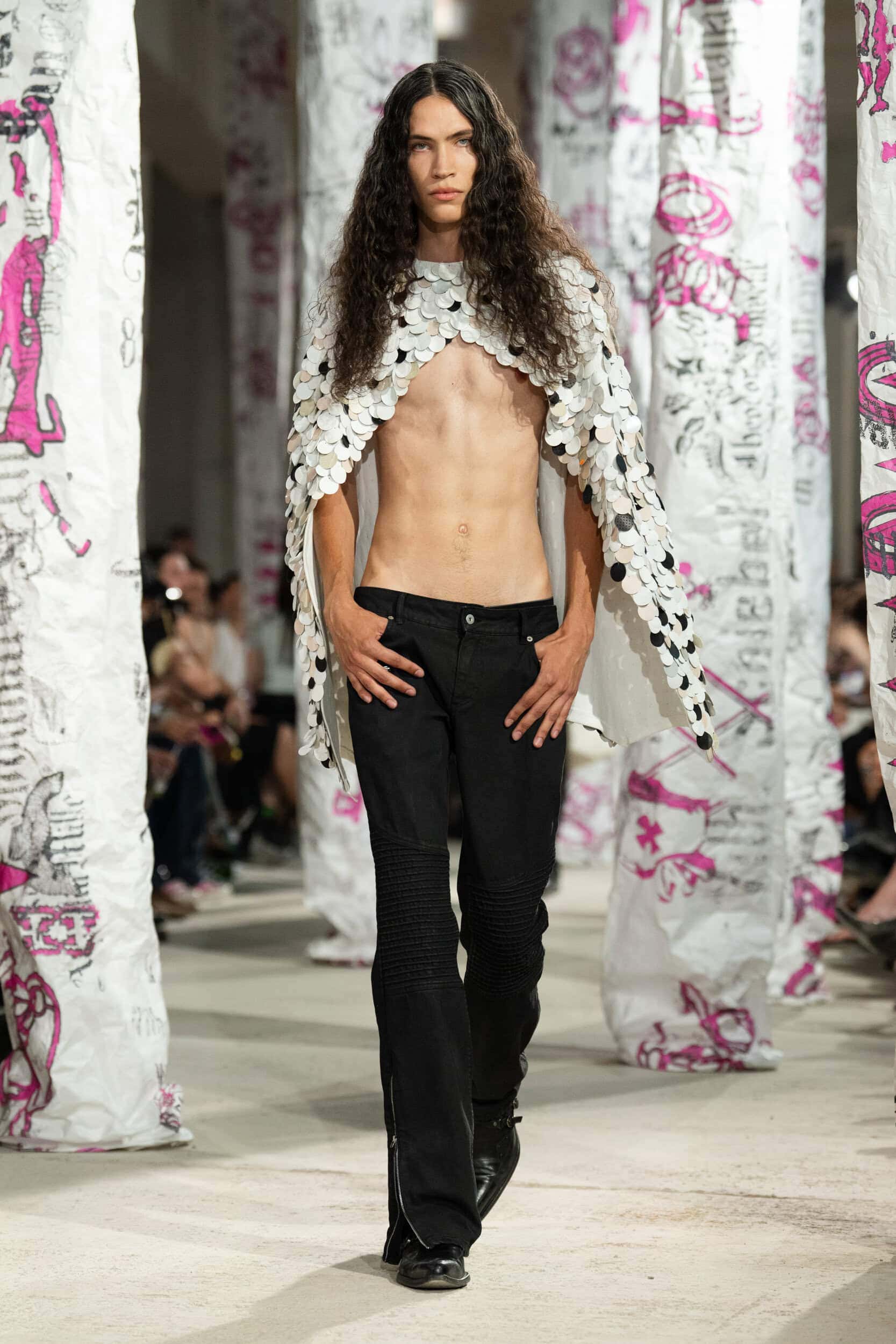
Haderlump
Haderlump is the other Berlin favorite, and understandably so. Creative director Johann Erhardt consistently delivers perfectly executed standout collections with smart tailoring and directional concepts. His signature pieces are immediately recognizable and often spotted on German red carpets and at special events. In this season’s collection “Exlibris,” referring to antique bookplates which signified pride in ownership and were a statement of identity, deadstock linen and upcycled leather were treated to evoke the tactility of parchment and the leather bindings of a book while the draping and layering and volumes mirror folds or reams of paper. In our fleeting digital age, this homage to print is a deliberate stand against mass production and reflective of their commitment to the meaning, quality, and longevity of their products. To this end, all of the garments are handmade in their atelier in Berlin and they provide free repair services to extend their life.
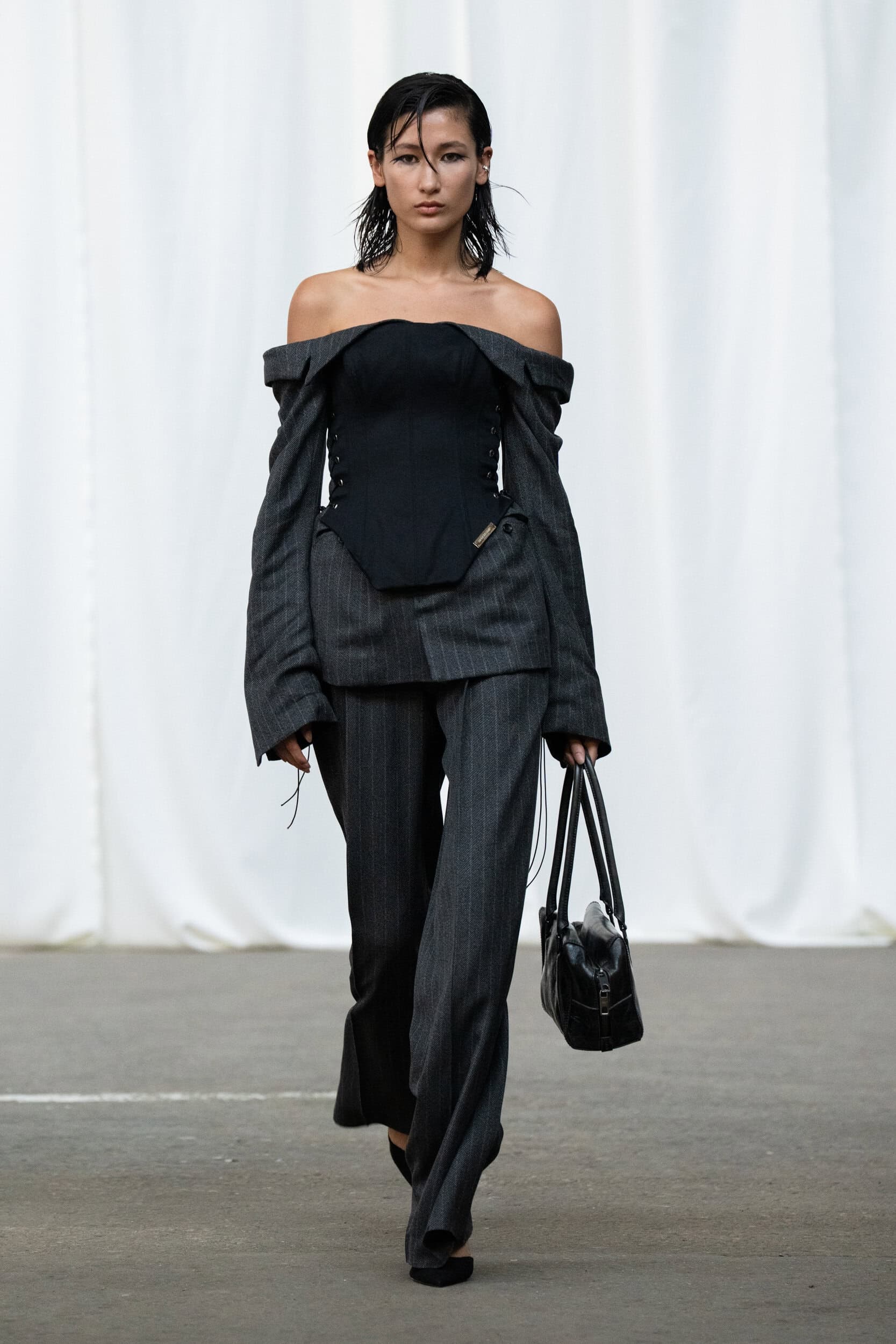
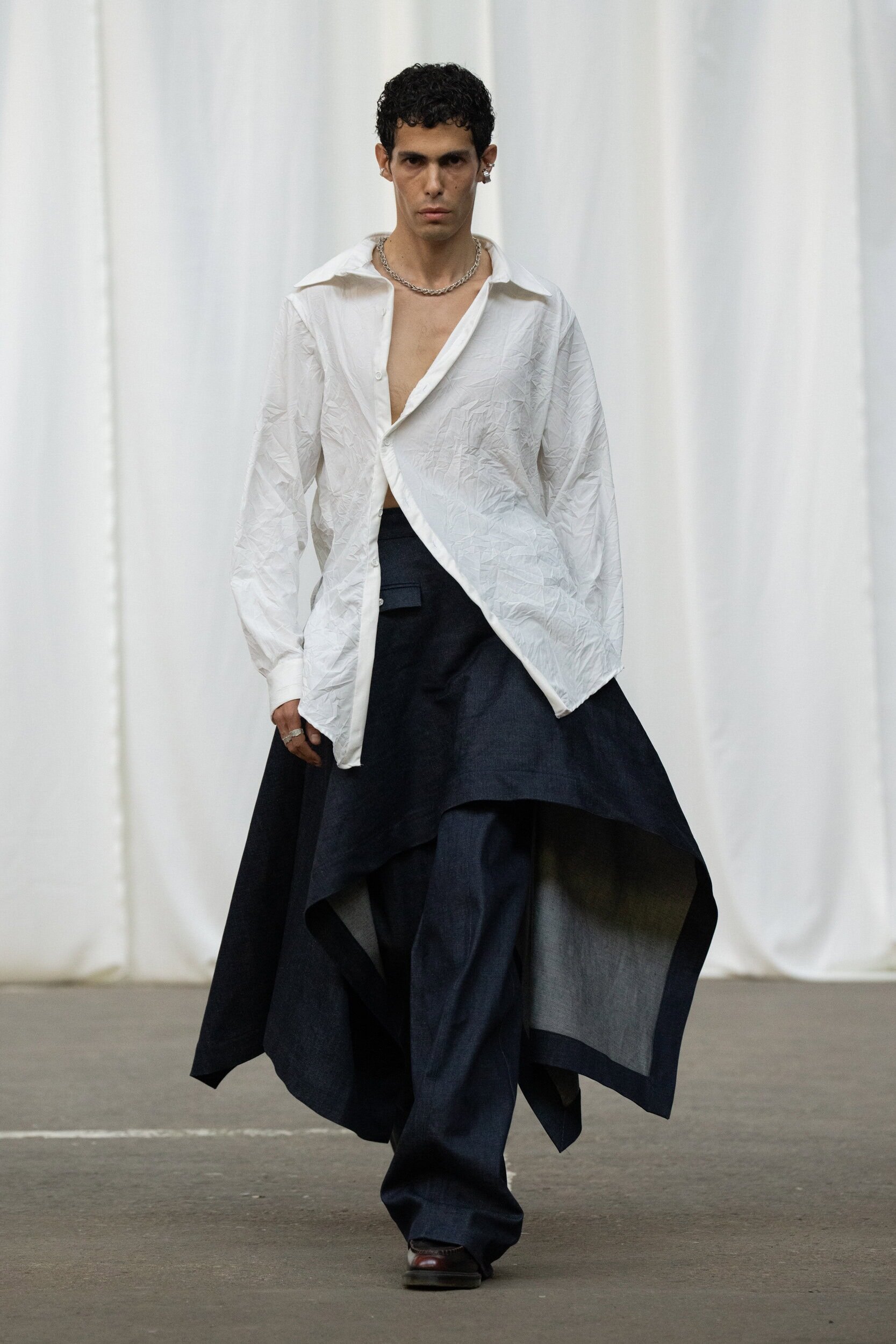
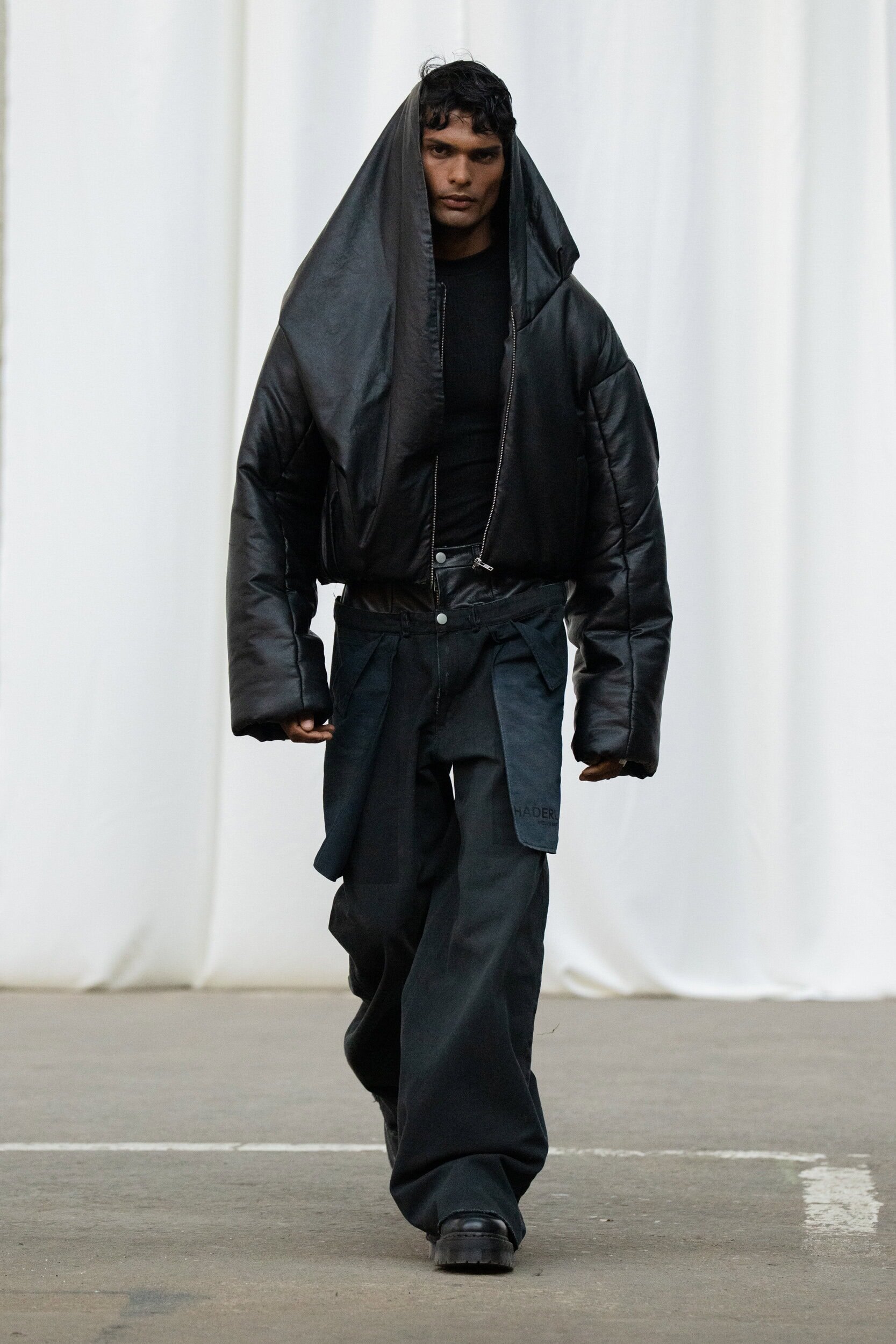
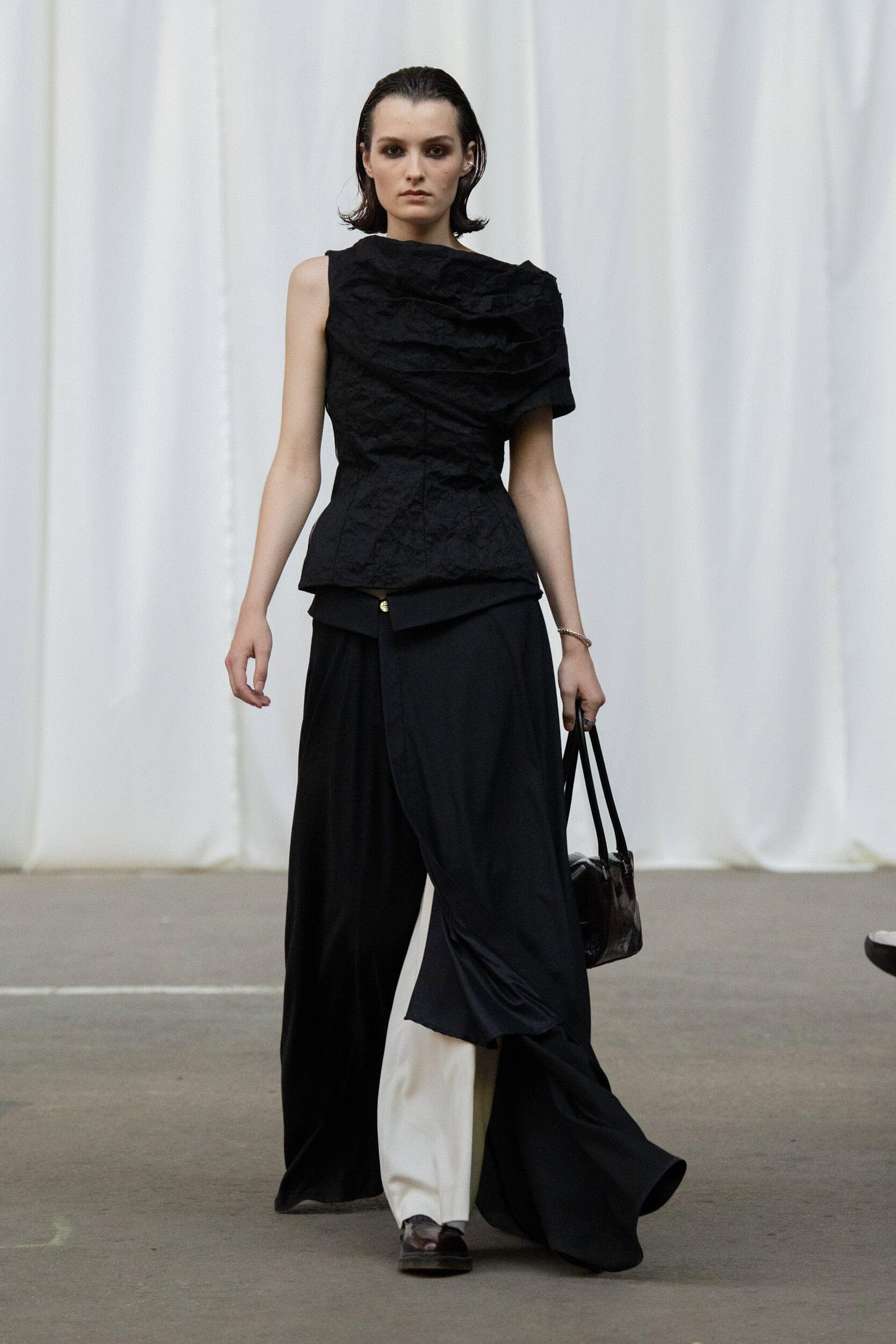
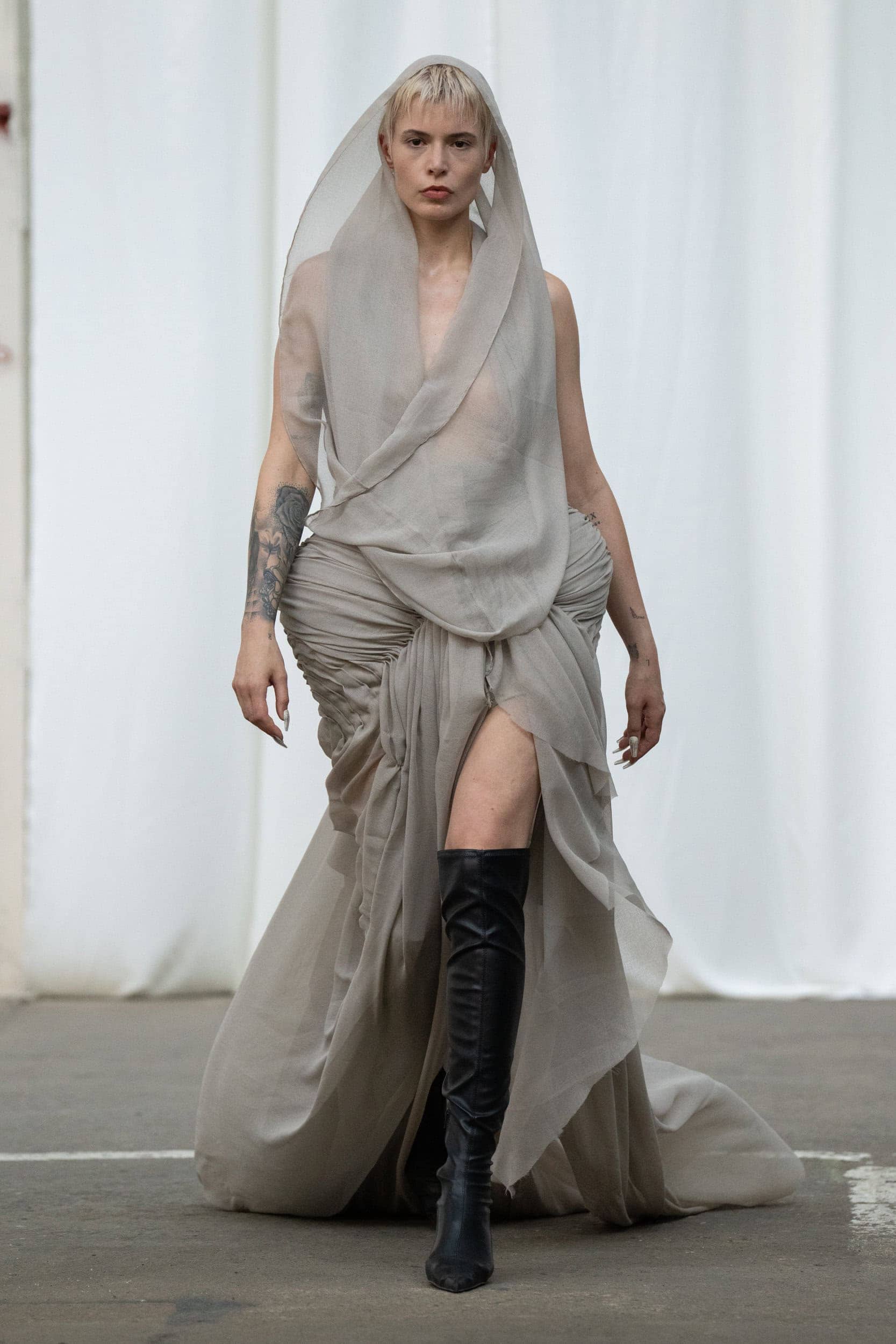
David Koma
David Koma debuted in Berlin with his third menswear collection. Titled “I Love David,” it references fashion darling David Beckham, Michelangelo’s David, and creative director David Koma himself. Becks’ iconic turn-of-the-millennium style made famous by the paparazzi is manifested in the low-slung, distressed denim and flashy outerwear. Tongue-in-cheek souvenir aprons of Michelangelo’s David with a trompe l’oeil effect get a luxury
upgrade in lace crochet. And the designer’s own signature flourishes include sequined pinstripes, tulle tuxedo stripe panels, and ornate hibiscus motif embroidery on both surf shorts and elaborate brooches. Like Dolce & Gabbana’s recent pyjamas collection, we’re totally here for it.
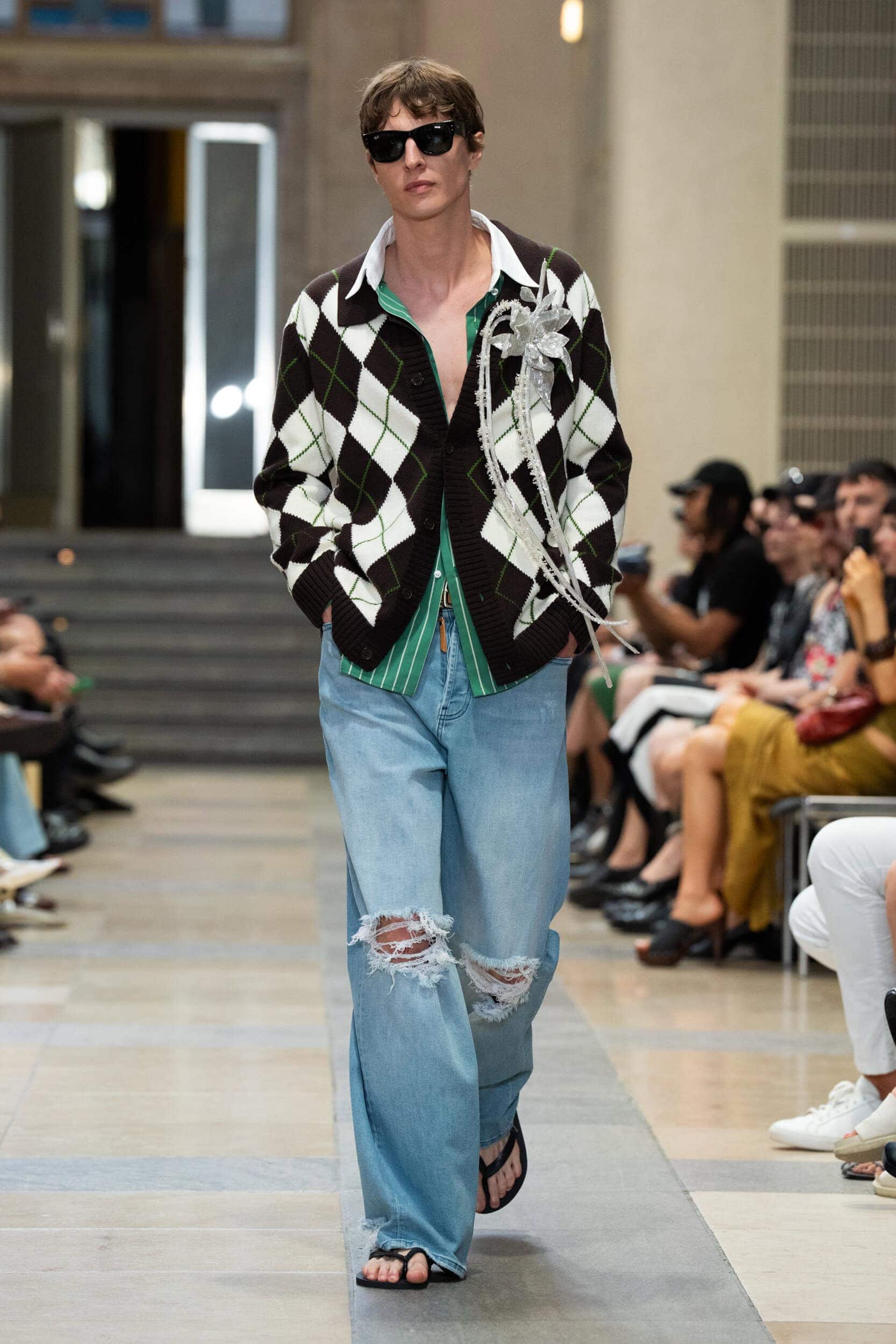
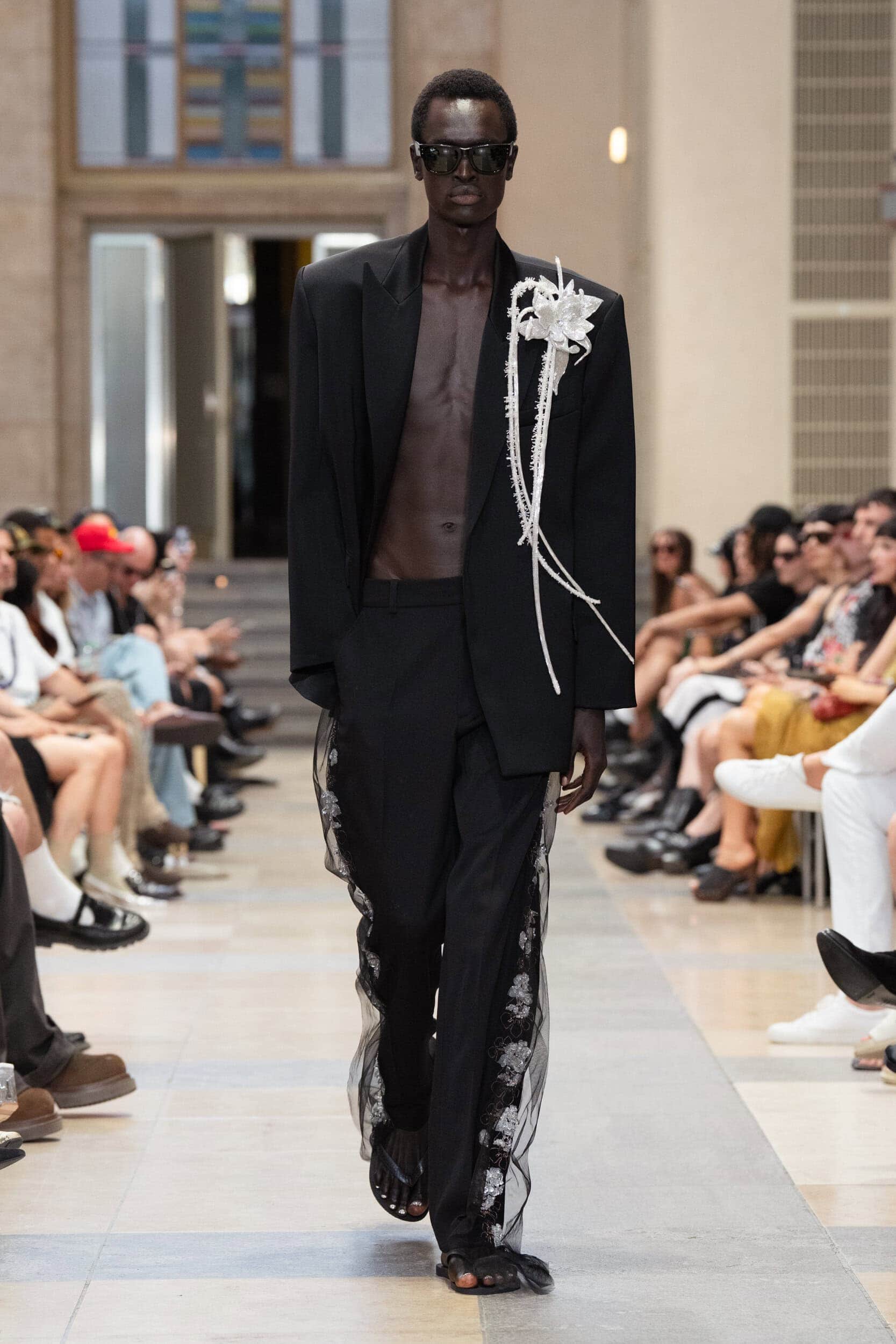
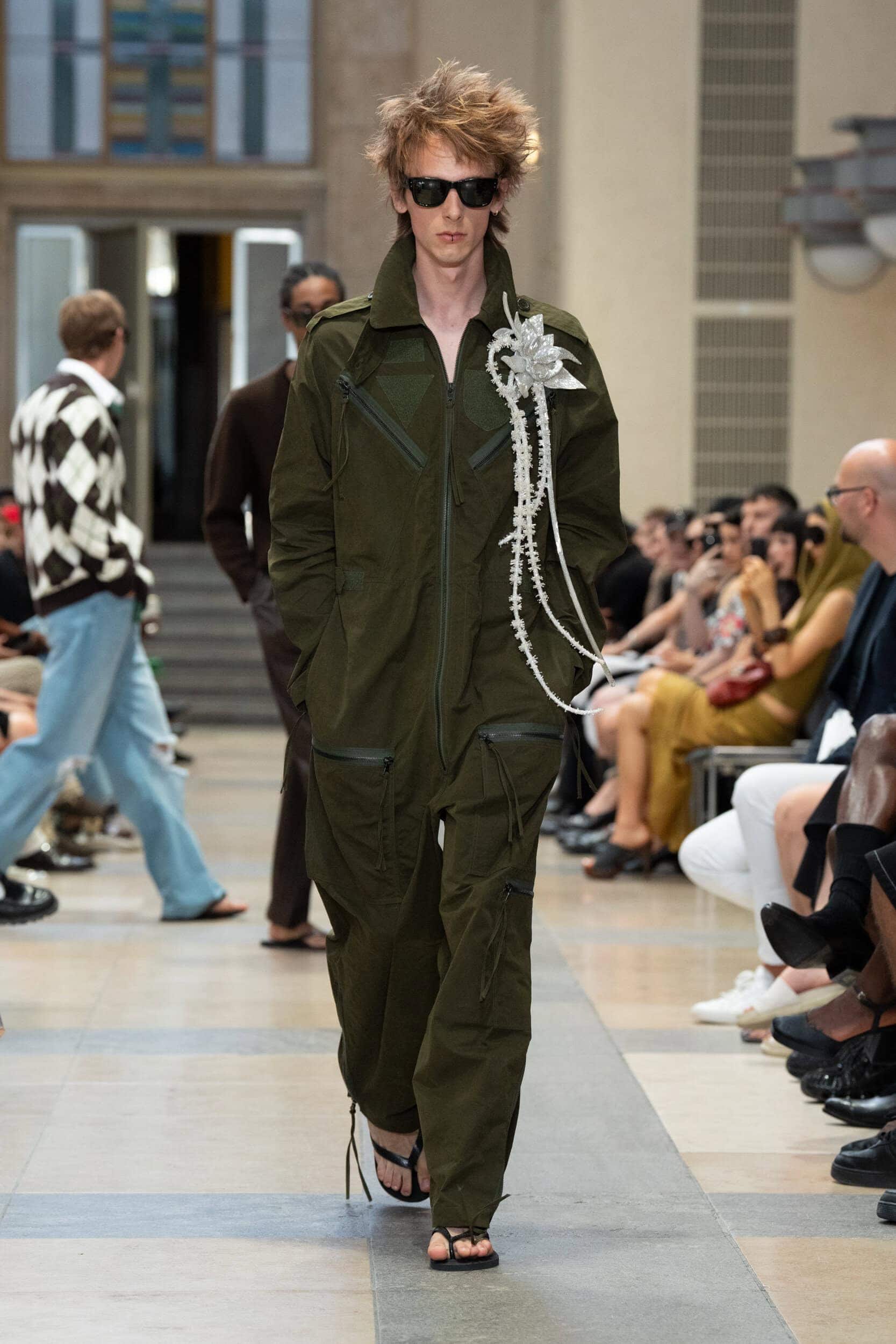
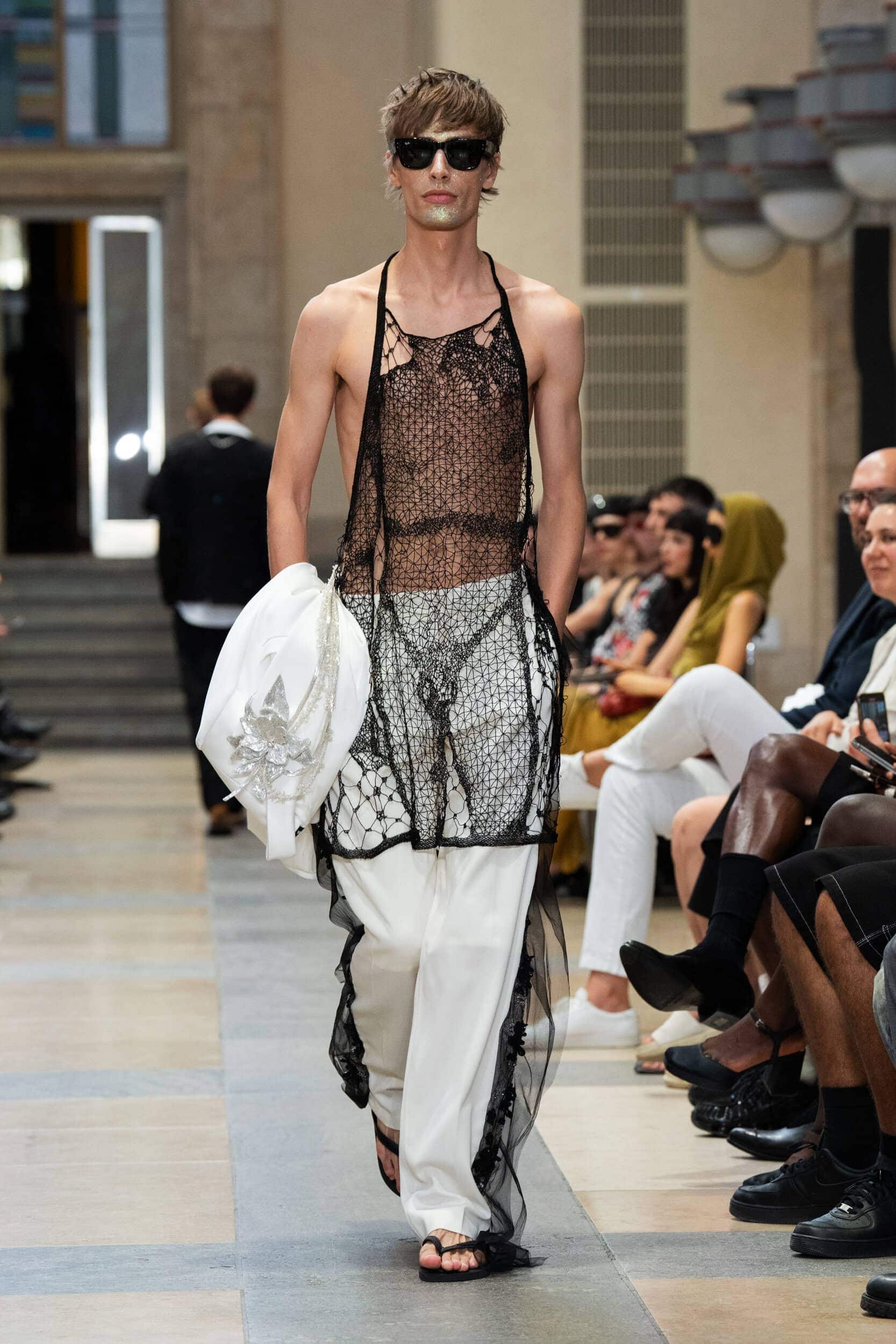
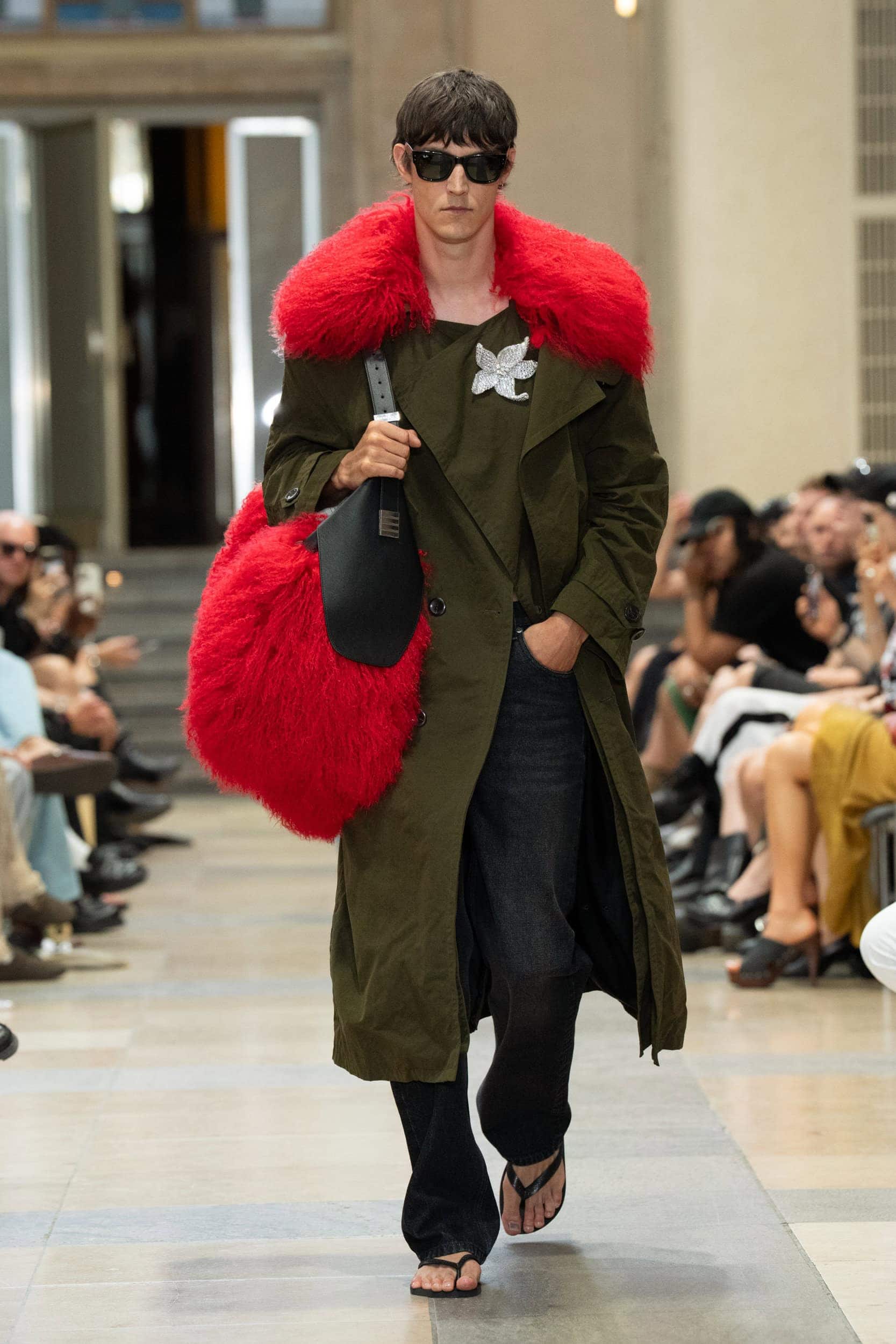
Who said fashion is superficial? Berlin Fashion Week is political, it is intentional, it is navigating our swiftly tilting planet with a commitment to values, identity, and community.
